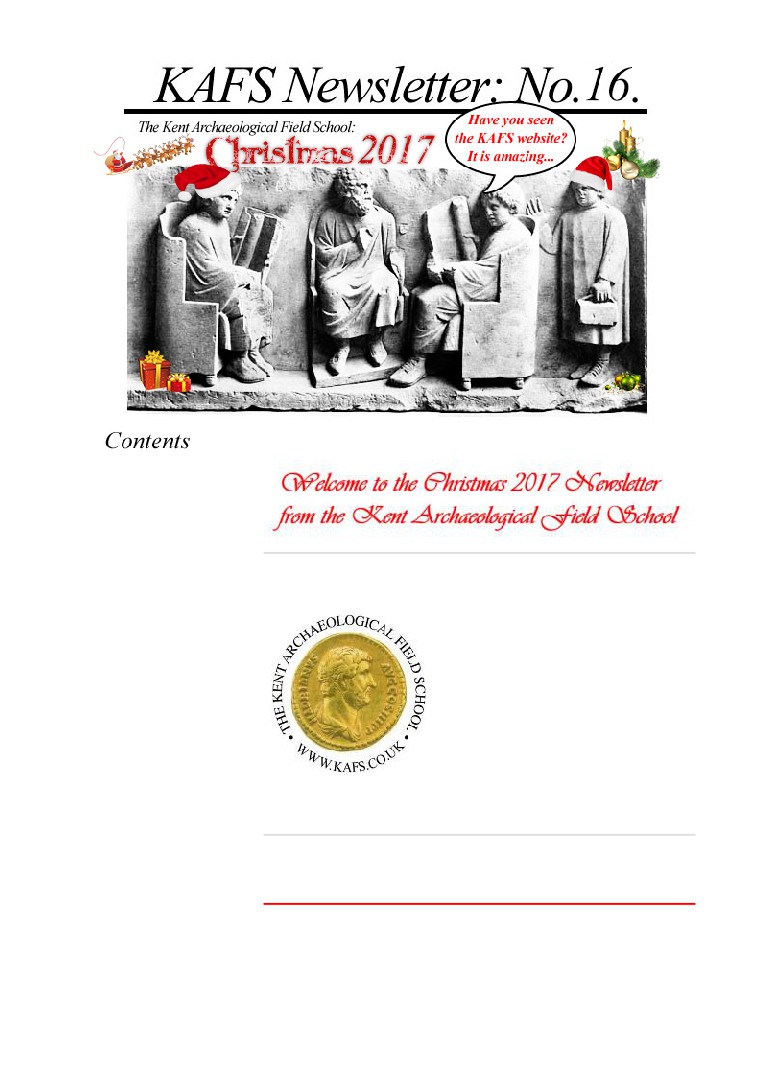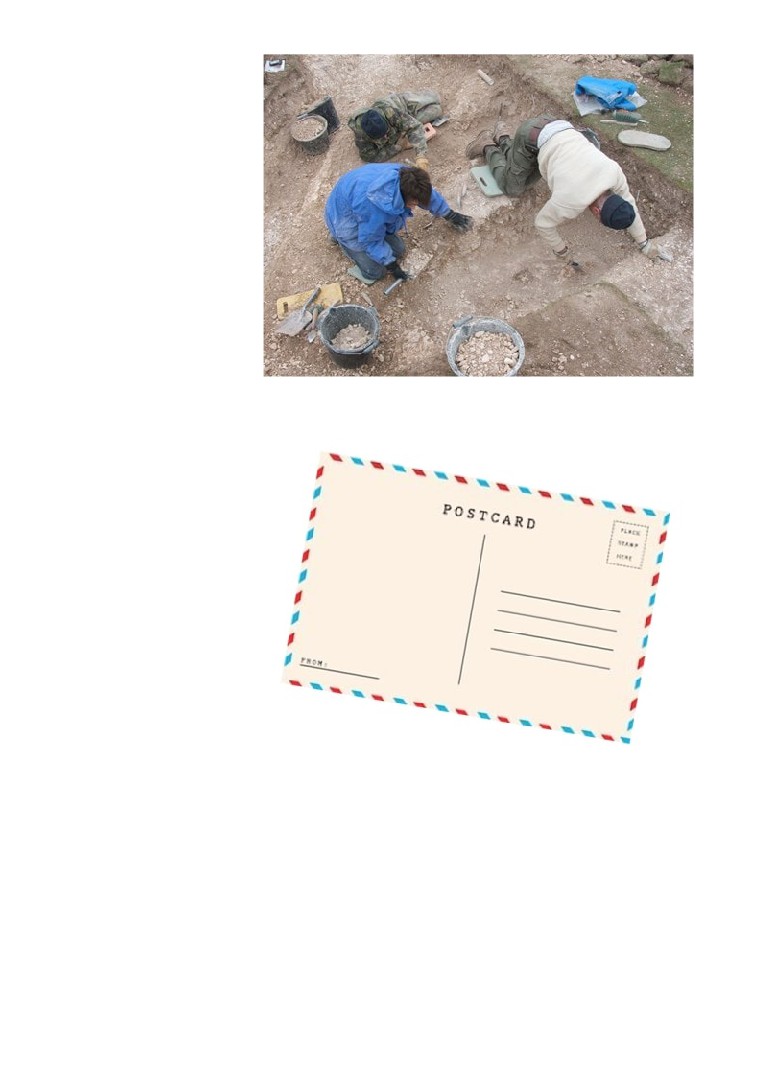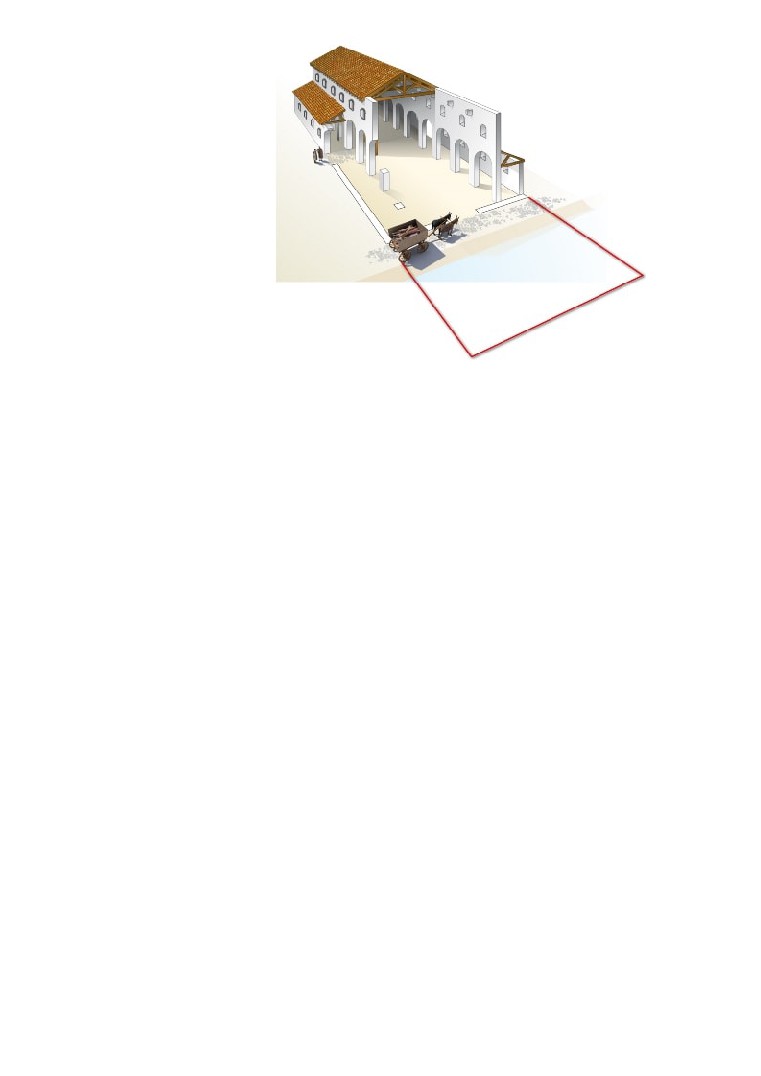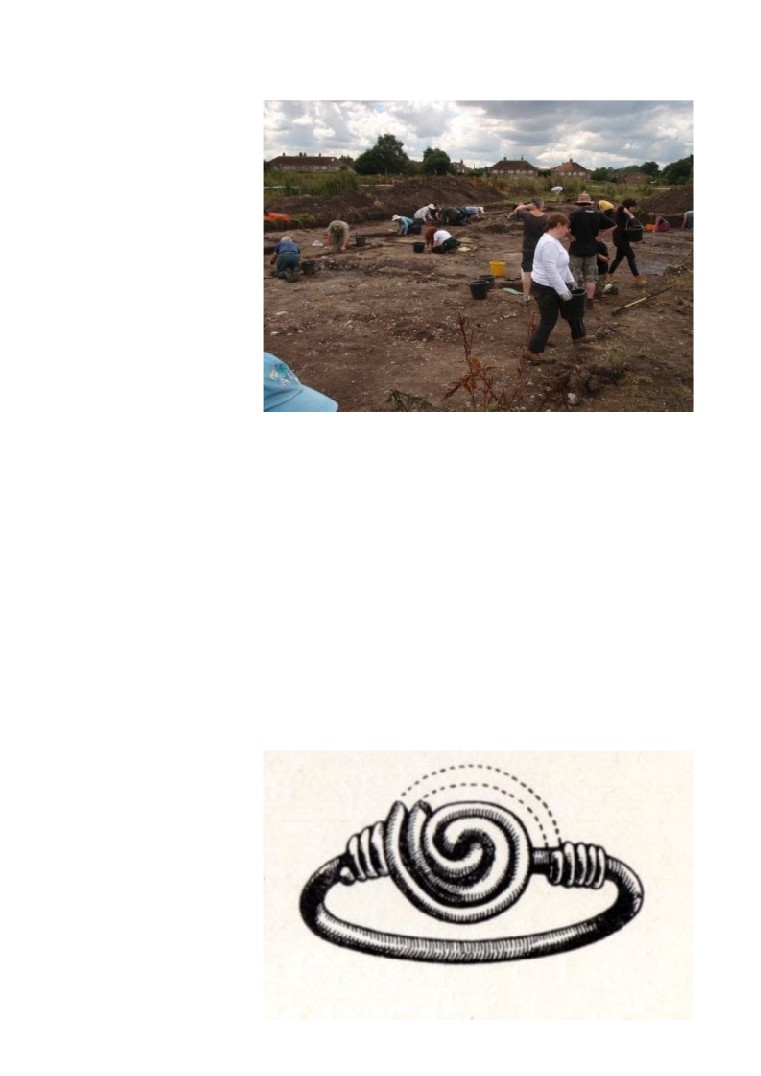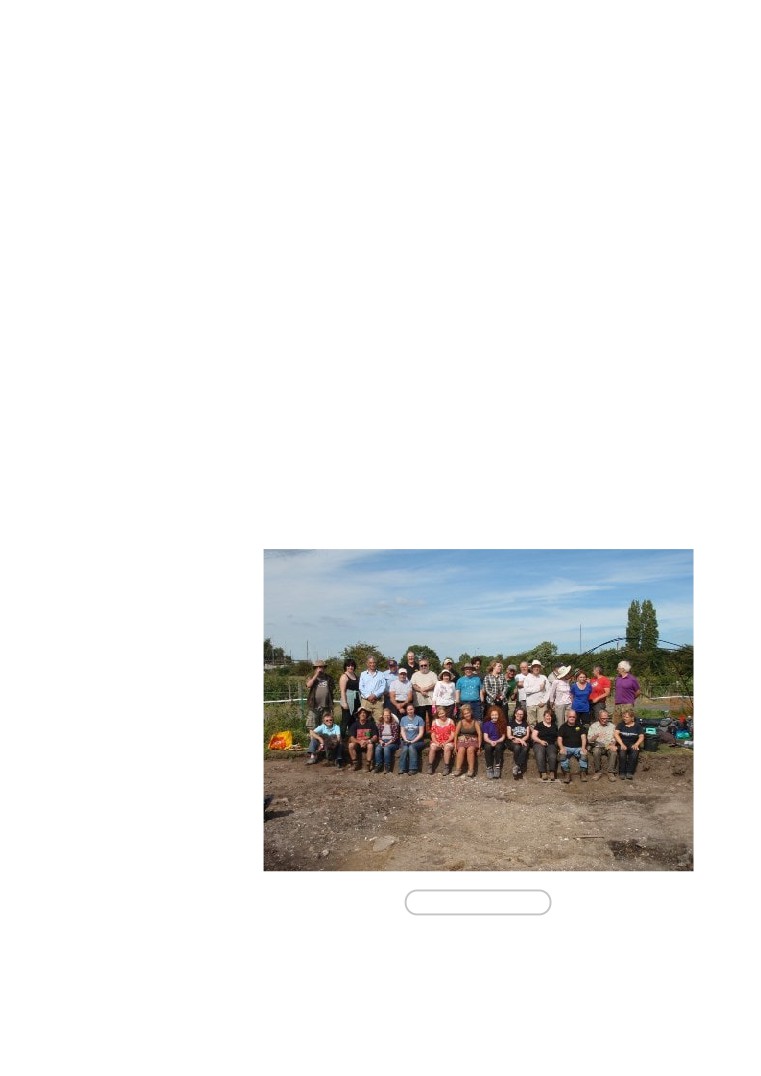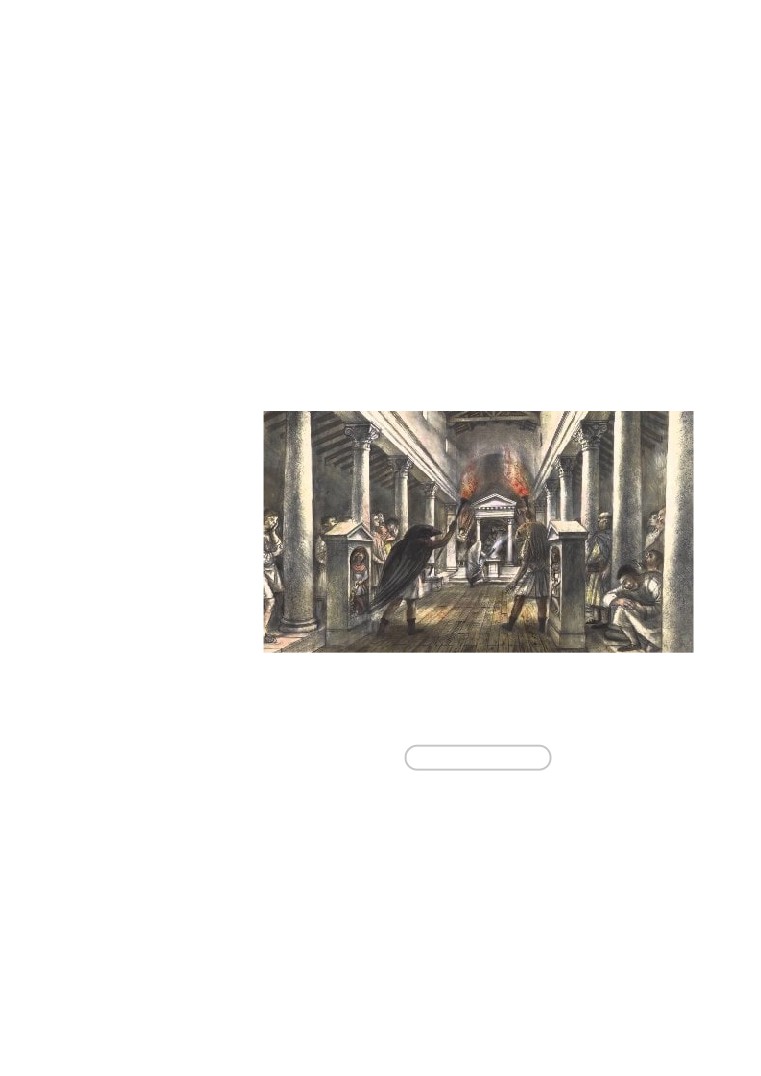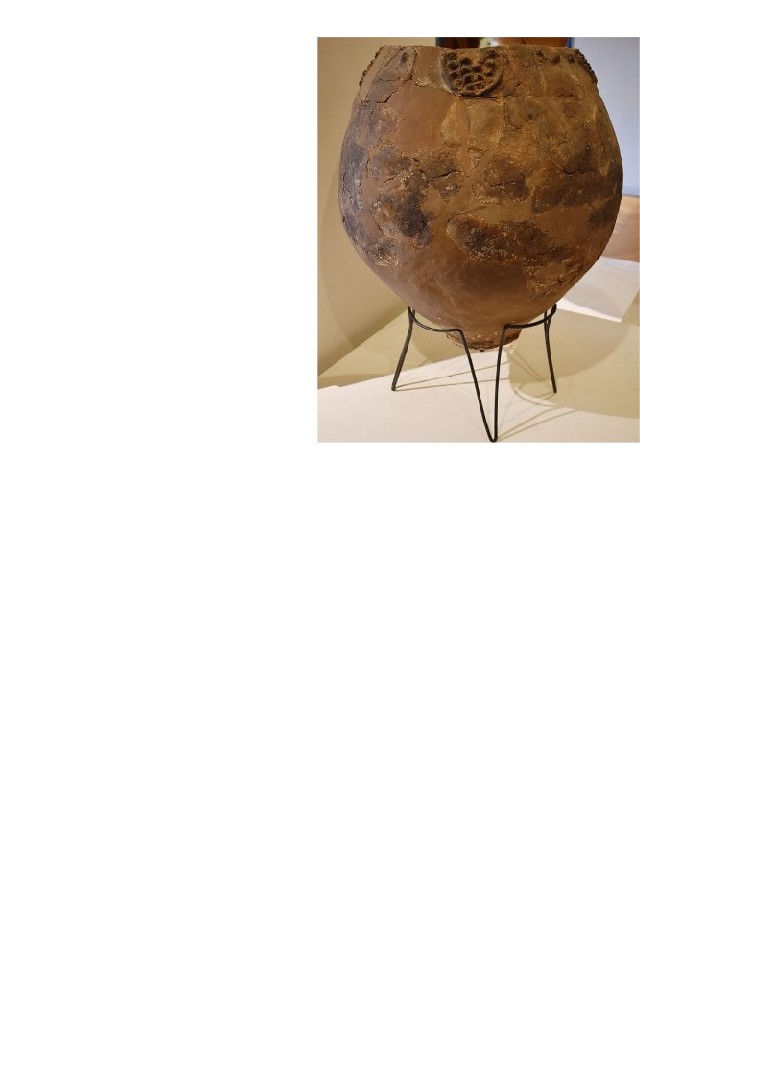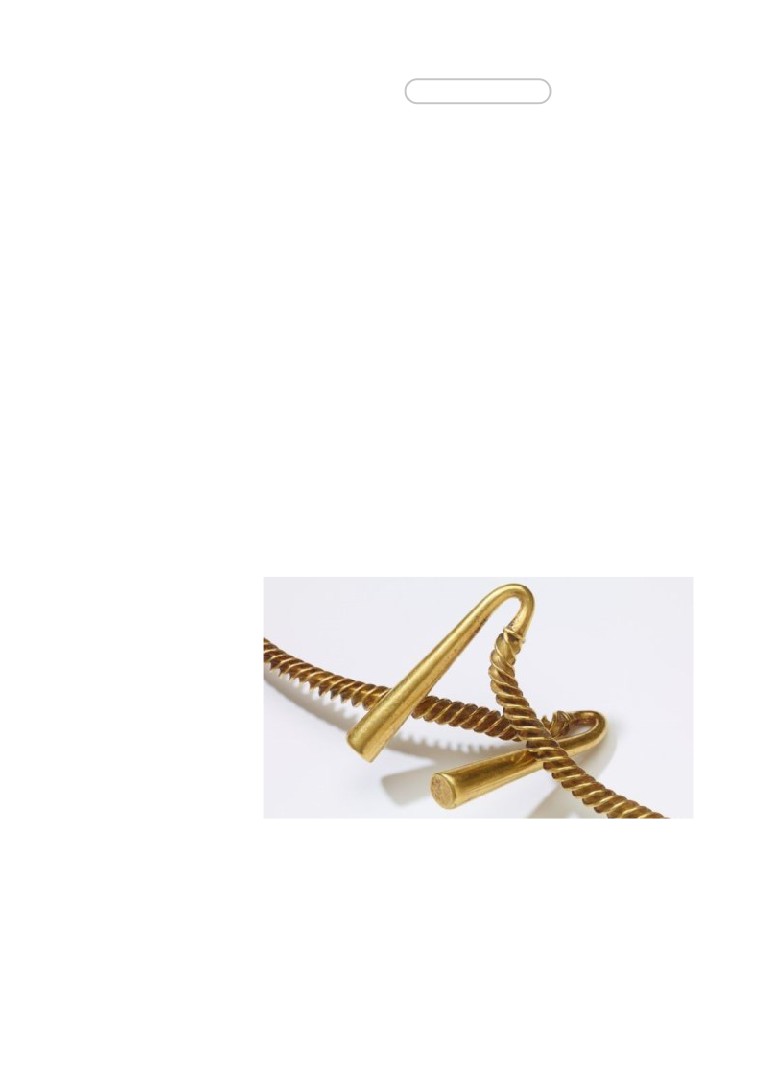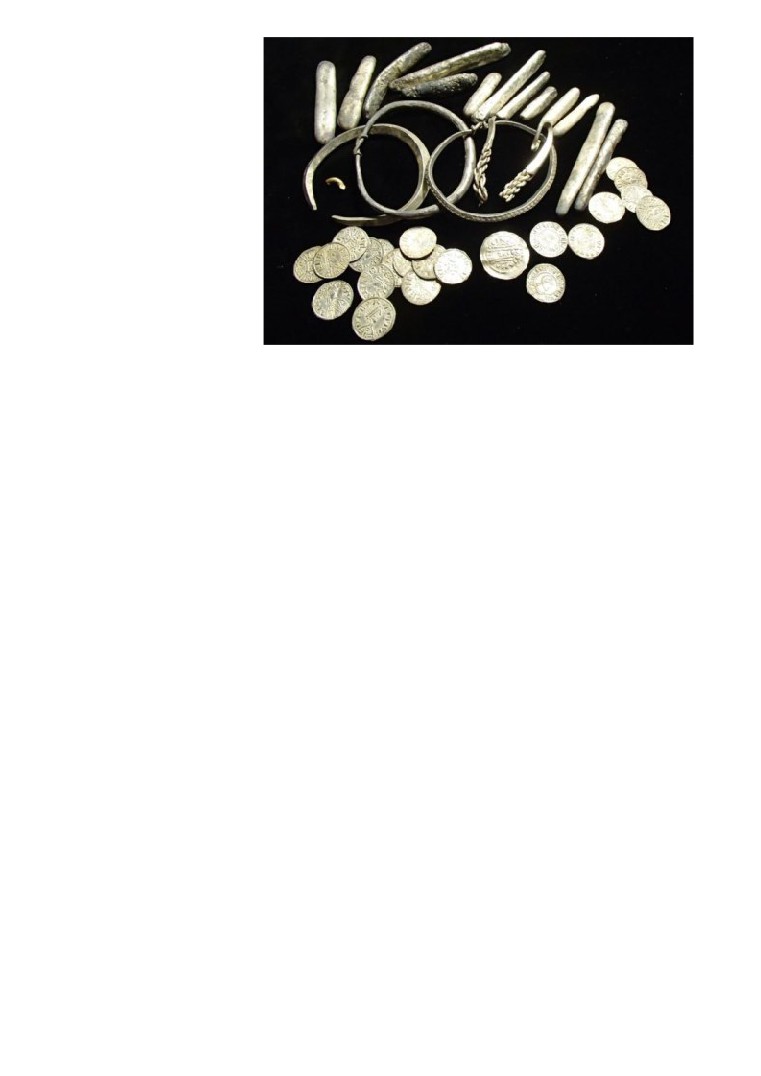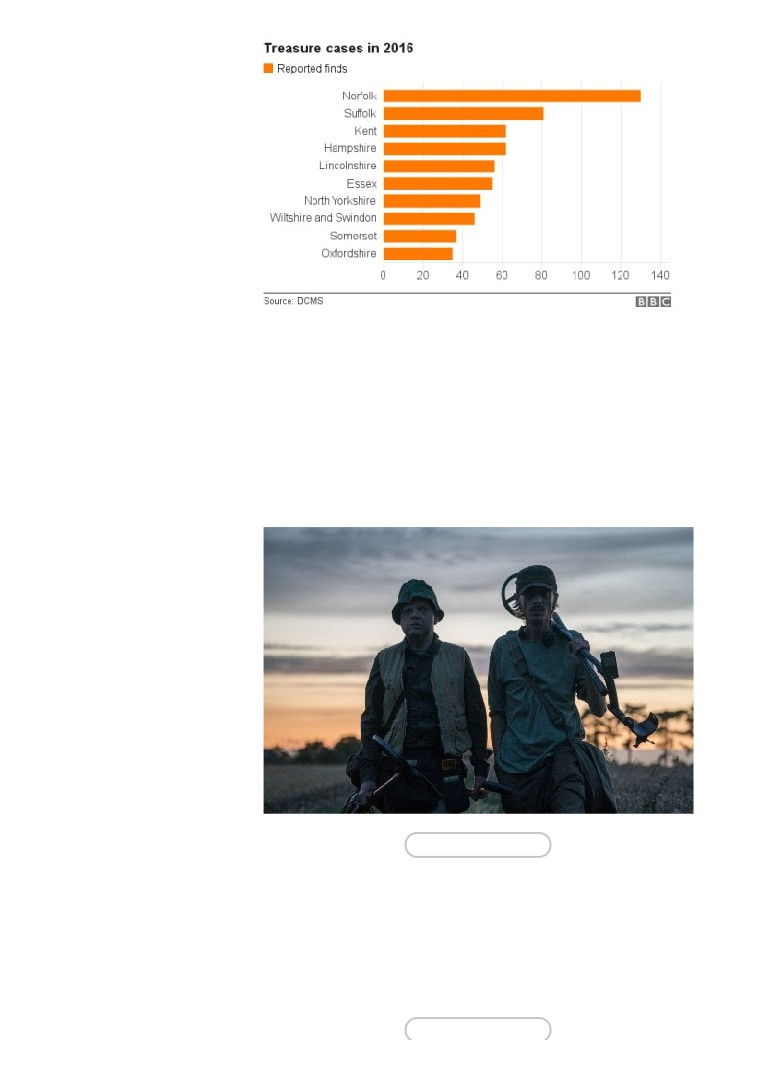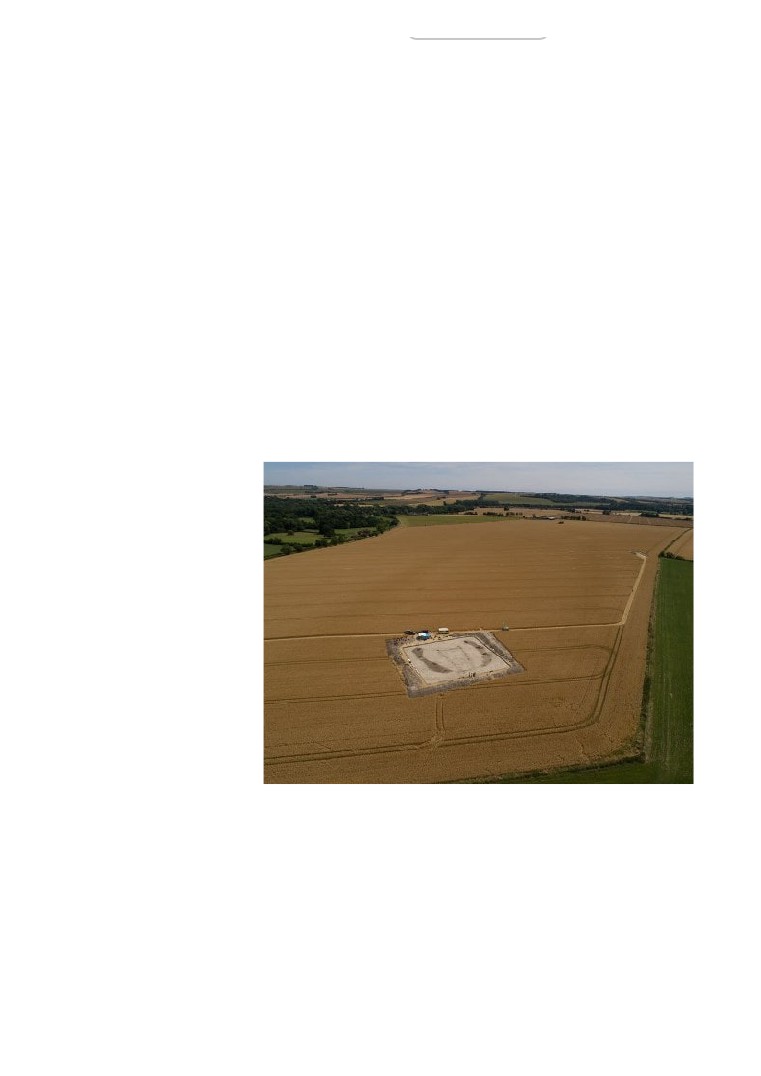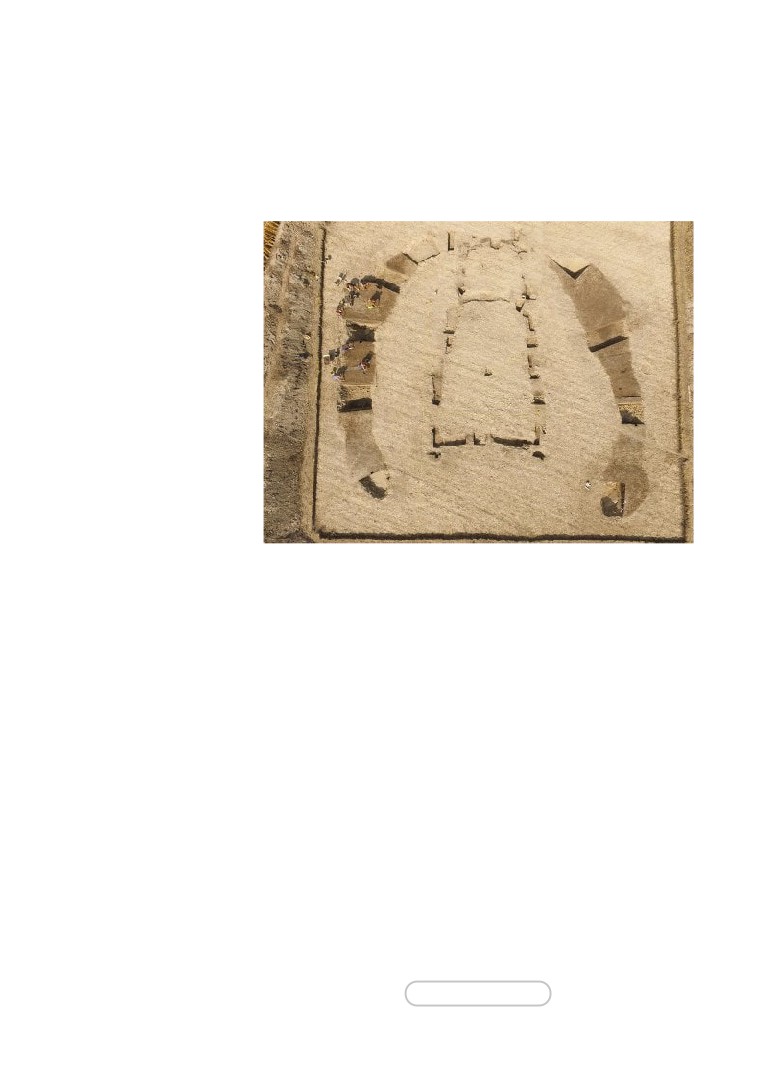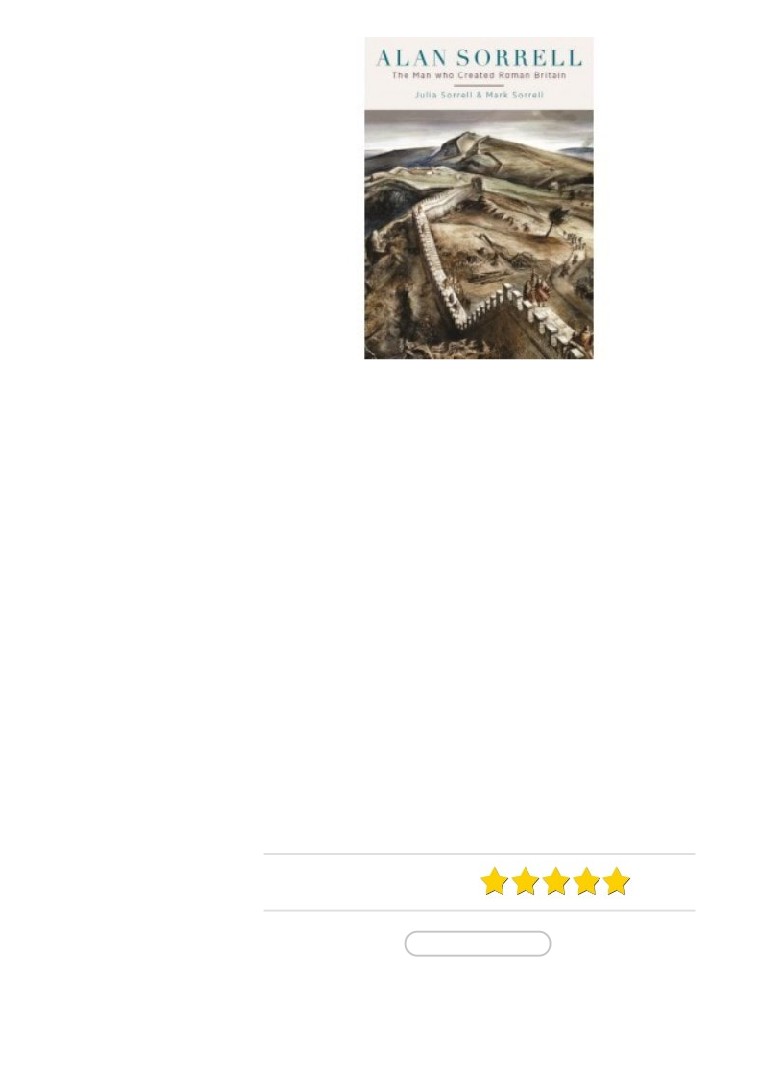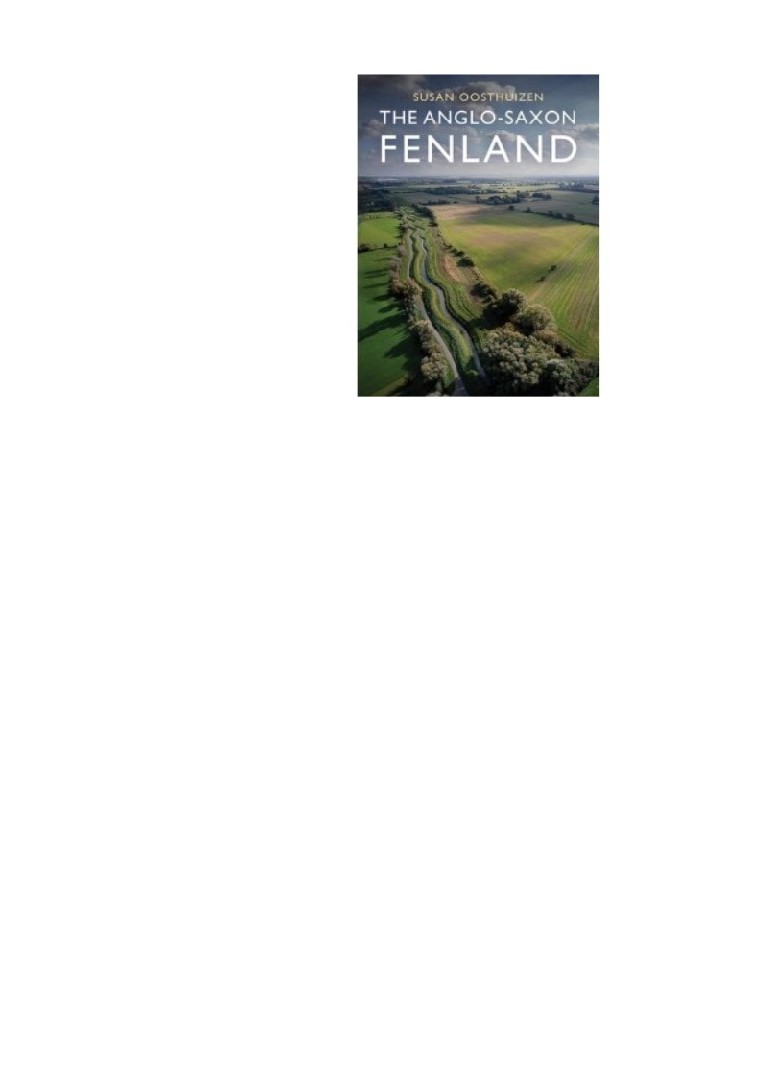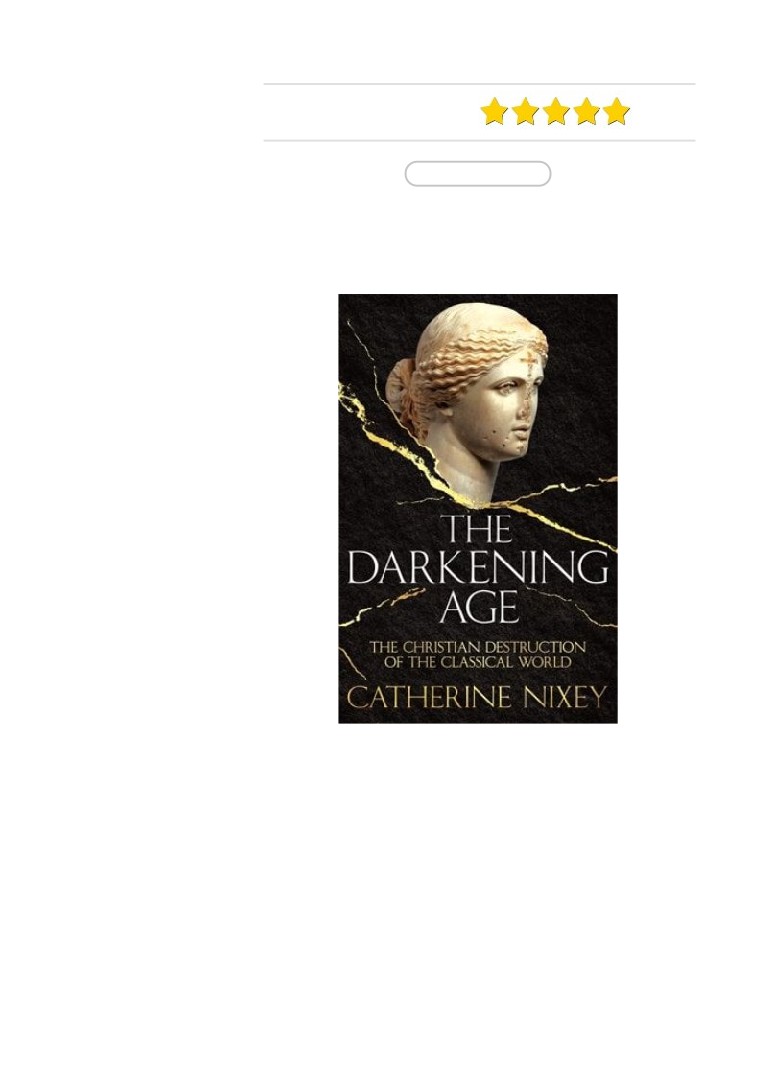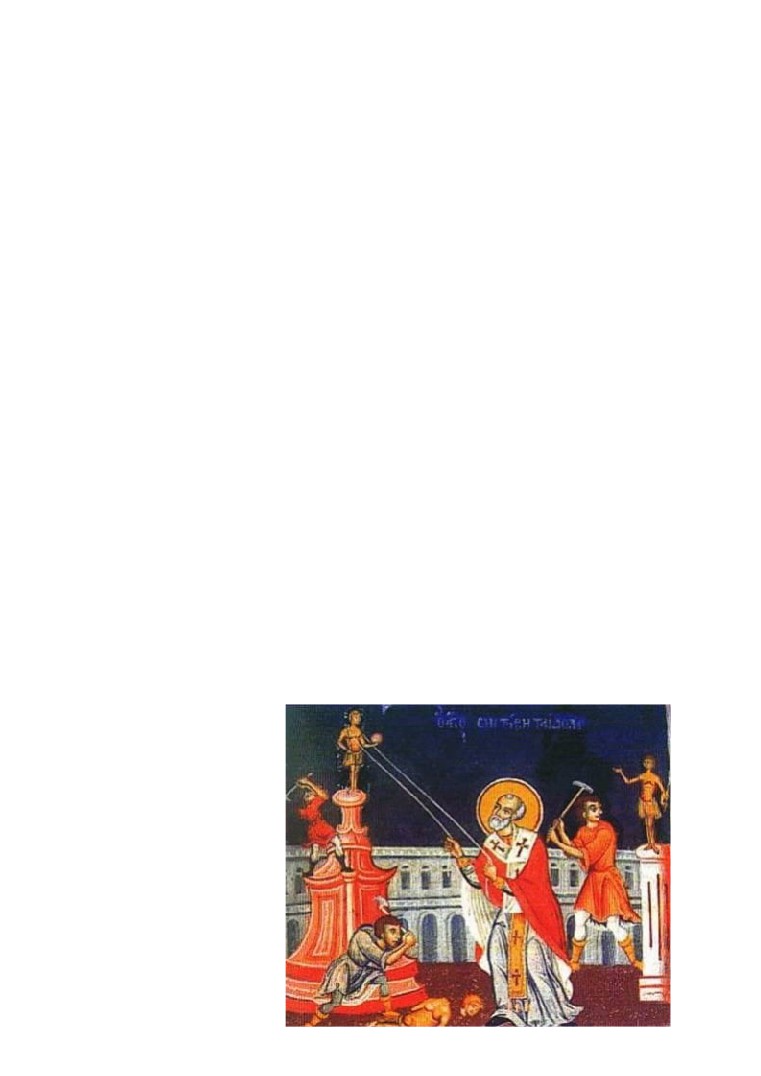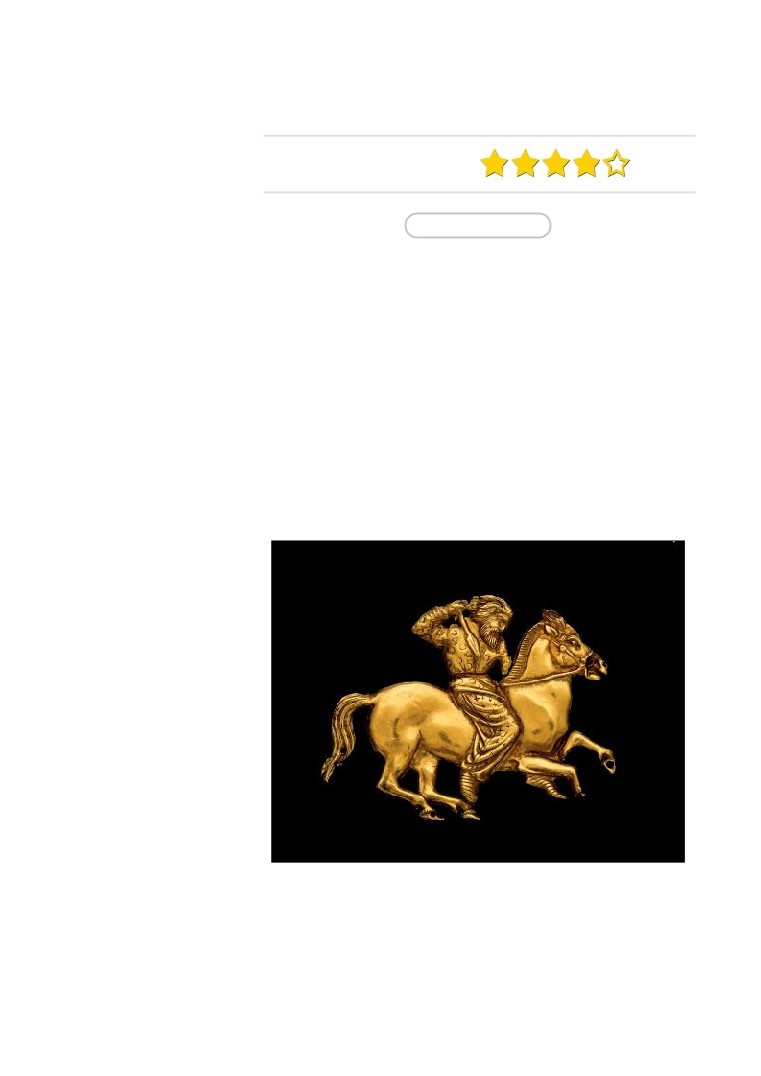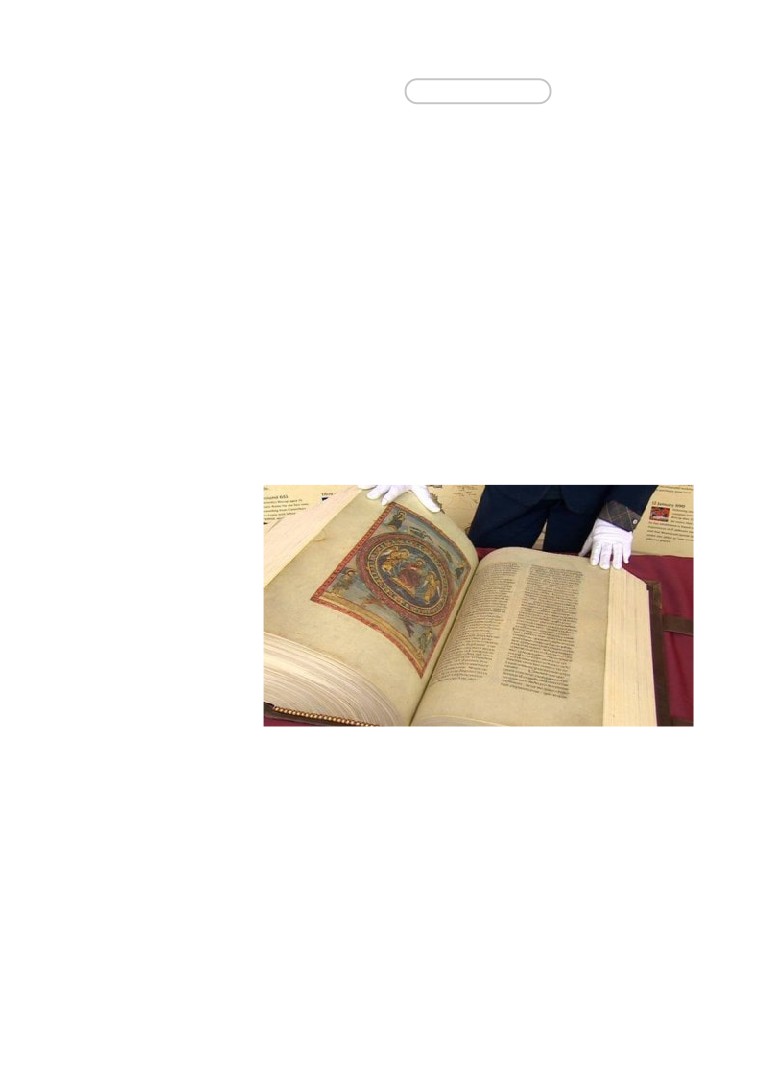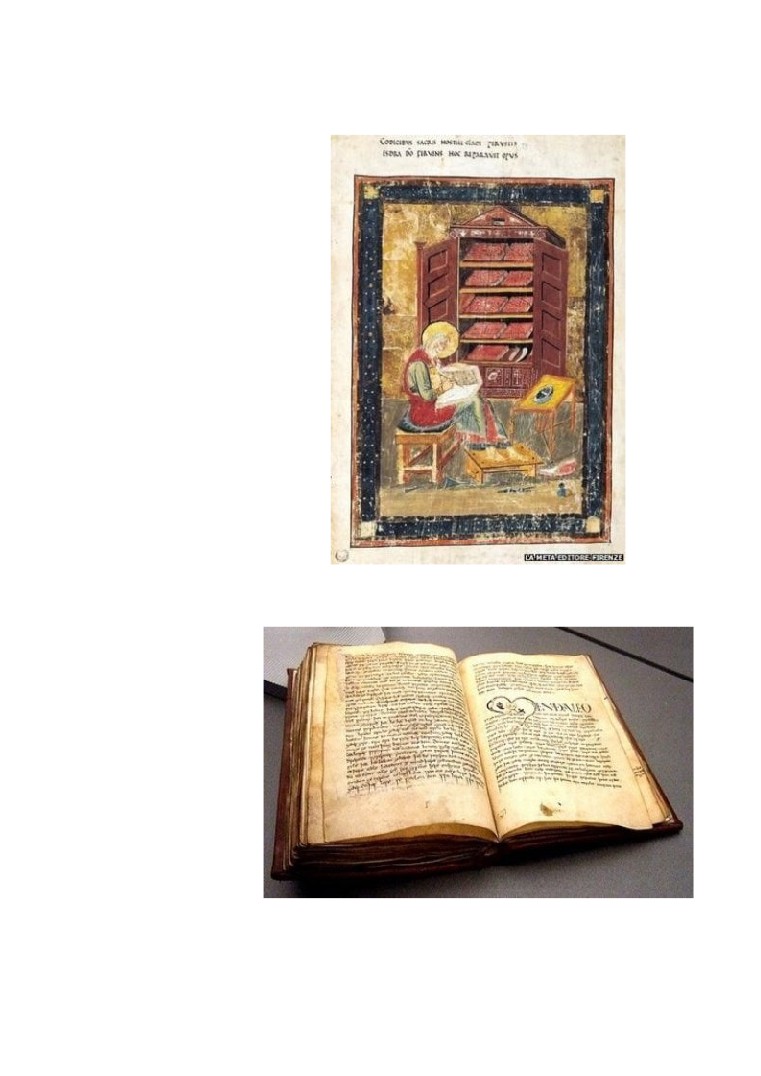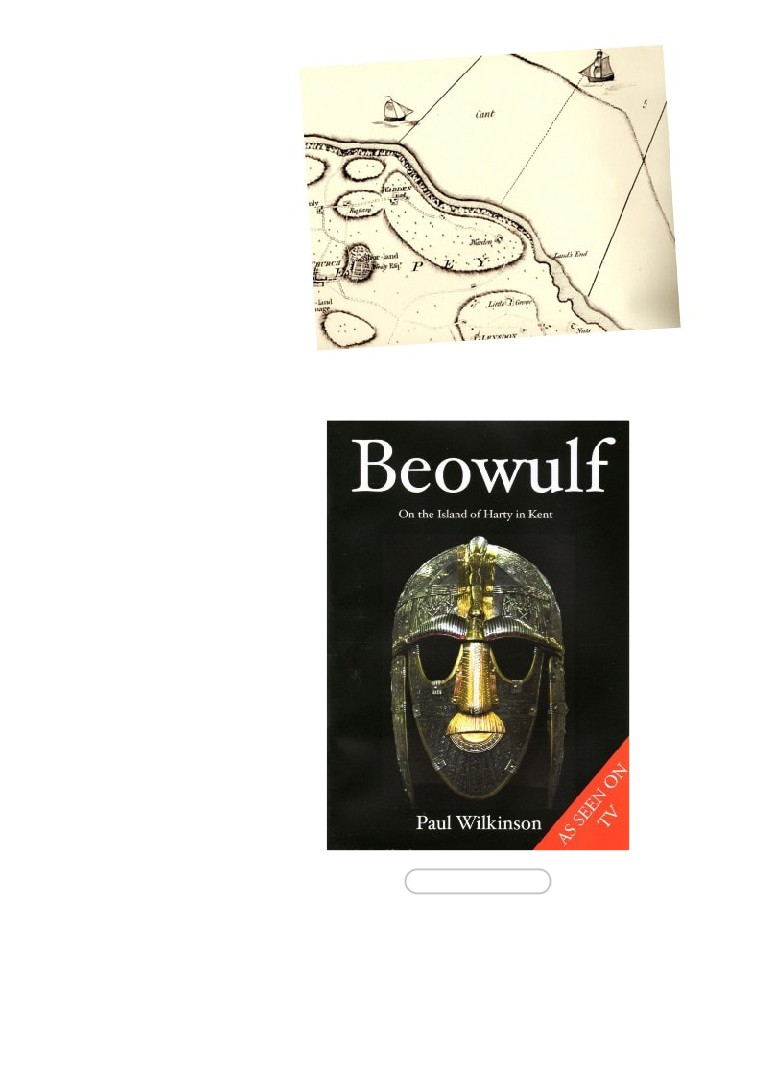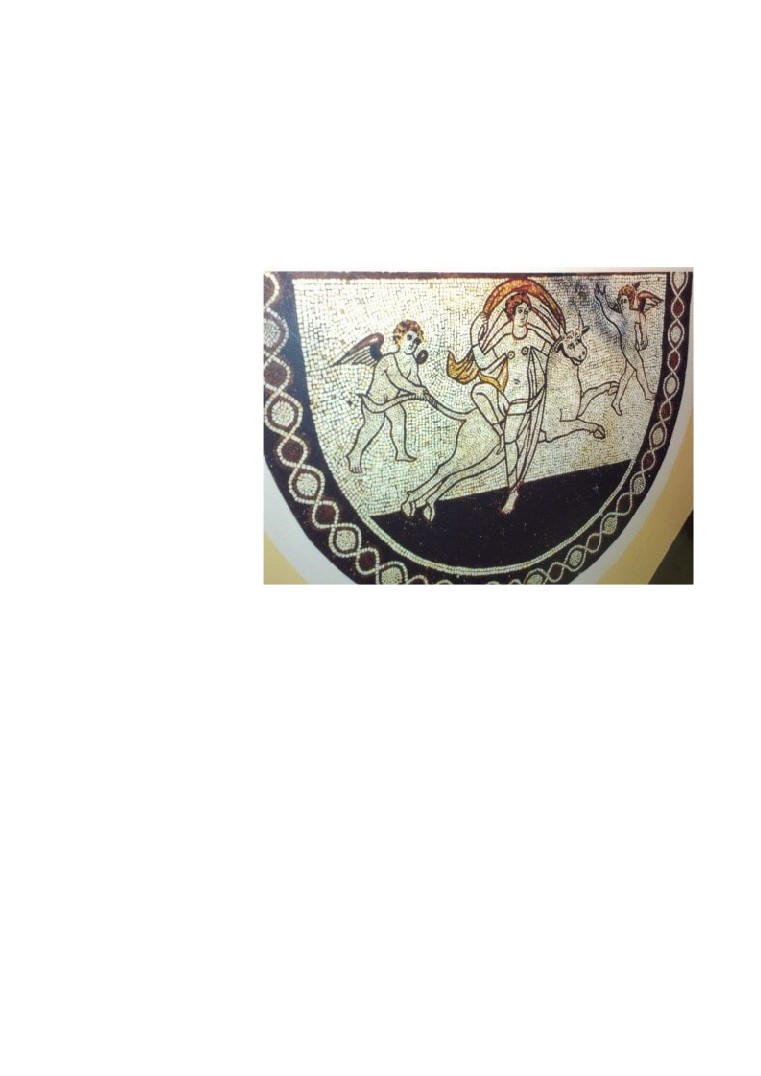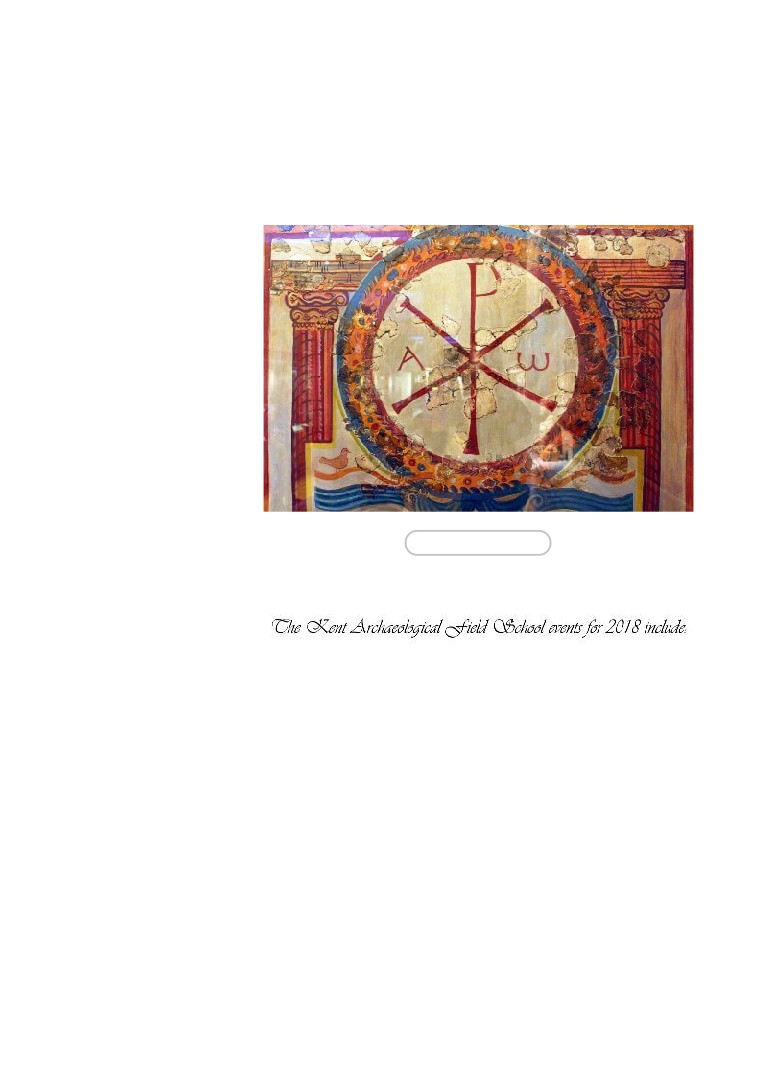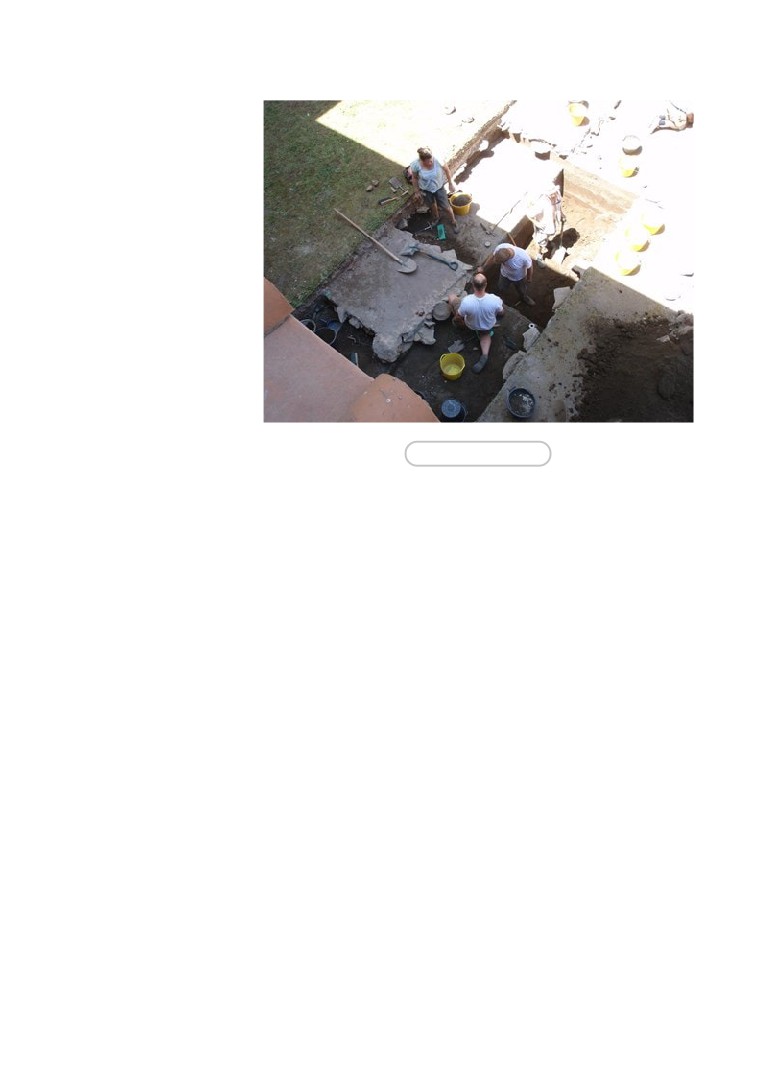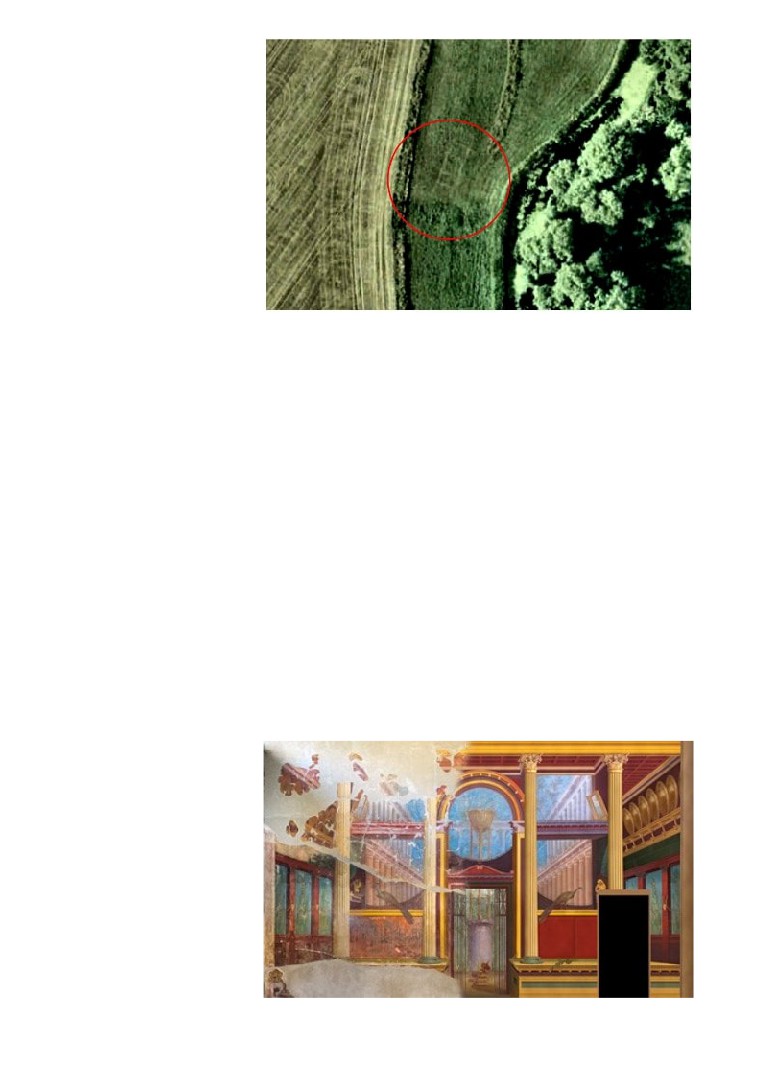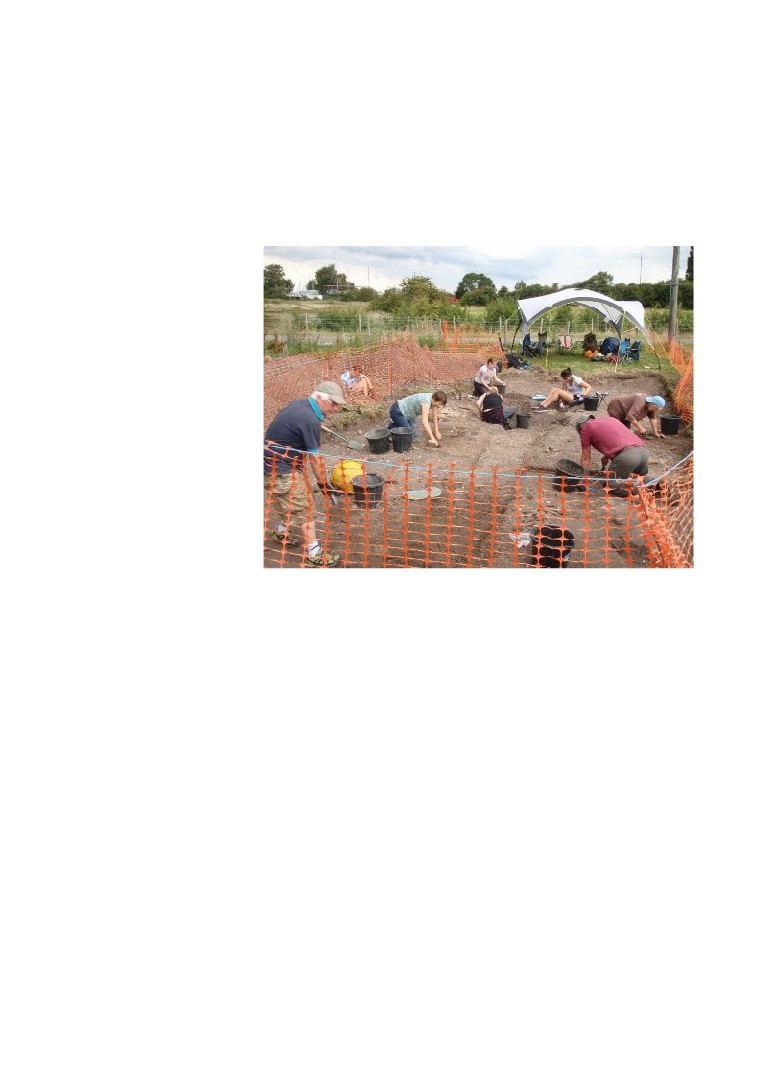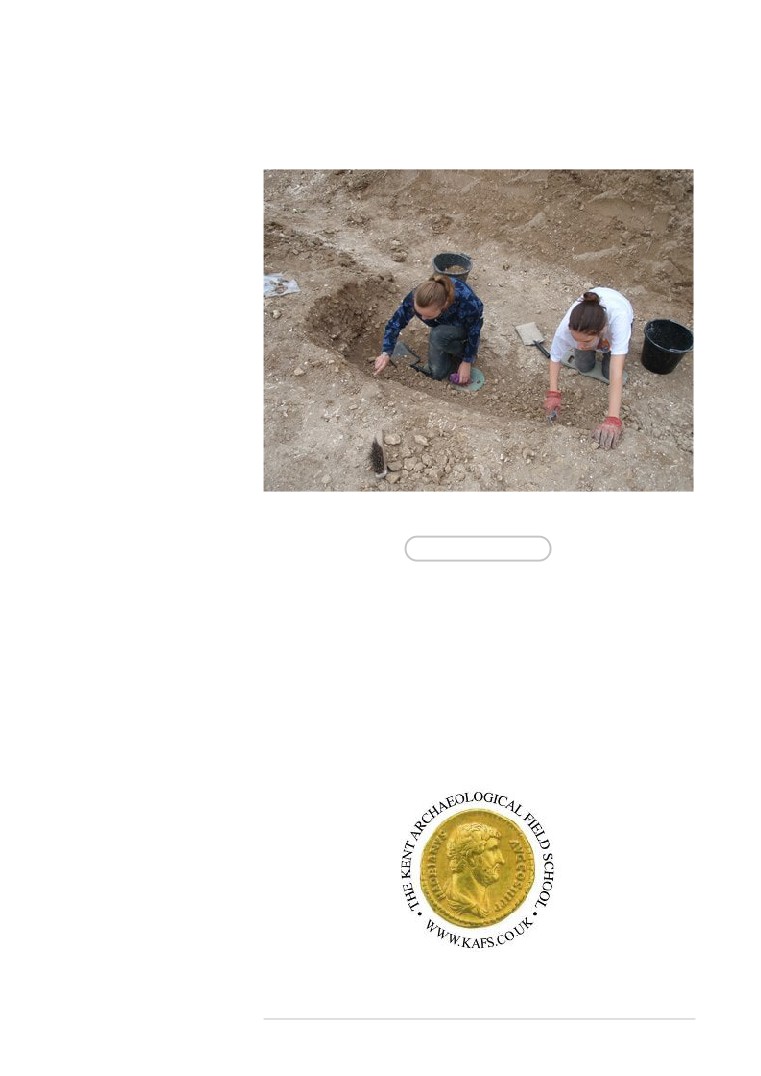WELCOME
CHRISTMAS!
THE KAFS YEAR SO FAR AND
OTHER YEARS...
THE NEW LONDON
MITHRAEUM
THE FIRST WINE NOW 6000
YEARS AGO
Dear Reader, we will be emailing a Newsletter
ALL THAT GLITTERS
each quarter to keep you up to date with news
and views on what is planned at the Kent
MOST WATCHED
DETECTORISTS
Archaeological Field School and what is
NEOLITHIC EXCITEMENT
happening on the larger stage of archaeology
both in this country and abroad. To become a
SPORTSMAN OF THE YEAR:
GAIUS APPULEIUS DIOCLES
member or subscribe to the newsletter go to the
THE MAN WHO CREATED
ROMAN BRITAIN
bottom right hand corner click where it says
THE ANGLO-SAXON FENLAND
‘Click Here’.
I hope you enjoy!
THE DARKENING AGE
Paul Wilkinson.
SCYTHIANS
ANGLO-SAXON BIBLE
BEOWULF IN KENT
CHRISTMAS IN KENT
THE KAFS EVENTS
Breaking News: Christmas!
COURSES FOR 2018
KAFS BOOKING FORM
It was a public holiday celebrated around December 25th in the family home. A time
KAFS MEMBERSHIP FORM
for feasting, goodwill, generosity to the poor, the exchange of gifts and the
decoration of trees. But it wasn’t Christmas. This was Saturnalia, the pagan Roman
winter solstice festival. But was Christmas, Western Christianity’s most popular
festival, derived from the pagan Saturnalia?
The first-century AD poet Gaius Valerius Catullus described Saturnalia as ‘the best
of times’: dress codes were relaxed, small gifts such as dolls, candles and caged
birds were exchanged.
Saturnalia saw the inversion of social roles. The wealthy were expected to pay the
month’s rent for those who couldn’t afford it, masters and slaves to swap clothes.
Family households threw dice to determine who would become the temporary
Saturnalian monarch. The poet Lucian (AD 120-180) has the Roman god Saturn say
in his poem, Saturnalia:
‘During my week the serious is barred: no business allowed. Drinking and being
drunk, noise and games of dice, appointing of kings and feasting of slaves, singing
naked, clapping
an occasional ducking of corked faces in icy water- such
are the functions over which I preside’.
Saturnalia grew in duration and moved to progressively later dates under the
Roman period. During the reign of the Emperor Augustus (63 BC-AD 14), it was a
two-day affair starting on December
17th. By the time Lucian described the
festivities, it was a seven-day event. Changes to the Roman calendar moved the
climax of Saturnalia to December 25th, around the time of the date of the winter
solstice.
BACK TO MENU
Breaking News/2:
The KAFS year so far and other years...
KAFS ‘dig’ at Star Hill near Bridge- can you name the diggers and the year? First
answer on a postcard wins a free course!
2017 at Abbey Barns, Faversham a spectacular year of discovery for the KAFS
archaeologists with additional investigation on the aisled barn at Abbey Fields in
Faversham and whilst other years work had focused on the bath house the building
this year’s work investigated the other end of the building with spectacular results.
We can now say the at the original 2nd century aisled building was built with
rectangular stone columns but unlike Hog Brook aisled barn the building at Abbey
Fields was extended in the 4th century with timber posts for another 85 Roman feet
(approx 25m) but on the same alignment and spacing as the original stone and brick
columned building.
Artist impression based on the earlier excavation results of the Roman aisled
building at Faversham but now with a 25m timber framed extension to be
added to the illustration.
Earlier work on the complex’s bathhouse has yielded prestigious small finds
including silver jewellery, exotic glass vessels and large quantities of coloured wall
plaster which, together with the structure’s stone and brick build of impressive
dimensions, measuring some 45m by 15m, suggests a building of some importance.
A silver finger ring (next page below right) found in the demolition rubble has been
dated to the Anglo-Saxon period and similar rings found at Dover have a date of c.
575-625 AD. The ring, only big enough for a child’s hand suggests the building was
demolished in the late 6th century to make a platform for a timber hall found in last
year’s excavation. Pottery in the cill beam slots dated this building also to the 6th
century.
Pottery sequence - The pottery sequence is also of particular importance with
Roman pottery starting from c.125 AD but the majority of surviving sherds - both
Late Roman and Early Saxon are from c.400 AD.
The pre-Late Roman element, and principally those of Early Roman date, consists
of both a few large fresh sherds and more worn material - including a few severely
abraded elements. The count of material that can be confidently allocated to the mid
third century AD is comparatively low, with most of the Mid Roman component
tending to be datable to between c.150-225 AD. Other than the noted variation in
sherd size and condition - and the presence of a few burnt sherds from Southern
and Central Gaulish samian vessels
- there is nothing particularly significant
amongst this material
- with most sherds stemming from kitchen wares and
individual sherds or sherd groups going through the normal range of discard
histories that excavation of a fairly long-lived occupation site will provide.
However, the bulk of the Late Roman pottery is different. With the exception of the
sherds from Contexts 101-2 and 105 all the Late Roman sherds are only slightly
worn or near-fresh. This latter condition applies to the Late Roman grog-tempered
sherds from Contexts 103-4, 110, 124, 126, 141-2, 201 and 205. Of these, the large
near-fresh lower-body sherd from 126 and the similarly basically unworn material
from 124 and 141, all suggest recovery from undisturbed contemporary layers or
features. Even those that are superficially ‘residual’ in other contexts are basically in
a similar condition - and generally unlike the majority of associated later sherds.
Admitted, the sherds from 101-2 and 105 are more obviously worn than the latter -
but this could be due to either original Late Roman post-abandonment exposure -
or just a degree of re-exposure during later post-Roman activity.
The over-riding feeling with all this material is that it stems directly from a near-final
phase of Late Roman occupation. ‘Near-final’ because of the possible evidence
from Context 142. This contained 2 near-fresh LR grog-tempered sherds but also a
fairly small rather worn crudely-made thick-walled dish base in a coarse-grained
quartz sand fabric. It has a quite high interior burnish and is fairly hard-fired with a
patchy skin of coarse sand - similar to its fabric’s - adhering to its underside.
Although its relative crudeness could suggest an Early, more probably, Mid Saxon
date - the fabric type is not really typical of regional Saxon fabric recipes. Initially, its
manufacturing characteristics all suggest a rather crude thickly-potted earlier fourth
century AD product
- perhaps not quite sub-Roman in type but superficially
suggesting that possibility.
Reviewing the current sherd evidence further - it is interesting to note that of the
recorded finewares traditionally mostly associated with the Late Roman period -
Nene Valley and Oxford colour-coated vessels - the Nene Valley ‘castor box’
bodysherd from Context 103 is severely abraded compared with the associated
grog-tempered sherds.
This might be no more than a bi-product of differing post-loss sherd histories but is
mentioned here to amplify another point. That is the different wear-pattern amongst
the purely grogged sherds from Context 141 which, amongst mostly near-fresh
material, includes one body sherd with fairly heavy unifacial wear and two other
lightly worn sherds.
Again this might be due to post-abandonment damage but it may also indicate the
type of wear normally acquired by discarded sherds during a moderately long period
of occupation. This point may be under-pinned by at least two sherds from the same
context - and a few more from other contexts - which have rather hard ringing
fabrics compared with the majority of lower-fired grogged sherds.
Pollard, in his quantified analysis of the Late Roman pottery from the Marlowe Car
Park, Canterbury excavations (Pollard 1984), made it clear that first - ‘scorched’ or
hard-fired wares tended to die out by c.350 AD and second - that the specifically
Late Roman type of grog-tempered pottery increased during the latter half of the
fourth century. This site has so far produced mostly rather low-fired grogged sherds,
with only low quantities of associated other sandy wares. Summarising, the
implications are that whilst some sherds may represent LR activity between c.275-
350 AD, the majority stem from an apparently increased c.350-400 AD phase of
occupation. Since the really crude lumpy grog-tempered products that technically
should epitomize the ‘decay’ period of c.400-425 AD (or from slightly earlier) are
absent, it is suggested that this phase of occupation is likely to have terminated
between c.375-400 AD or only very slightly later. Finally, it is tempting to suggest,
but does require further site and specialist confirmation, that the single crude coarse
sandy ware dish sherd from Context 142 may reflect late post-abandonment activity
between the period c.400-425 AD.
Abbey Barns Roman Villa: The class of 2017
BACK TO MENU
Breaking News/3: The new London Mithraeum
This is the first look inside an 1,800-year-old Roman temple that has been brought
back to life in London. The building, dedicated to the god Mithras, has been restored
to its original site, which lies beneath the new multi-million-pound Bloomberg
headquarters near Mansion House.
The remains are enhanced by light and sound effects, including chants inspired by
ancient graffiti found scrawled on a similar temple in Rome. This recreates what
historians say is “a best guess” about what went on during ceremonies there. An
expert from Museum of London Archaeology Sophie Jackson, an adviser on the
project, said: “London is a Roman city, yet there are few traces of its distant past
that people can experience first-hand. It’s extremely important that a site like this
exists — it is a new and different way of approaching ruins and because it is a
reconstruction we have been allowed to be more creative.”
The remains of the temple were first found when the land was being cleared in
1954. They were removed and installed in a haphazard fashion 100 metres down
the road before Bloomberg took them on as part of the deal to build its
headquarters. About 600 items found during a dig in the area have also gone on
show, including the oldest discovered hand-written document in Britain, etched on a
wooden tablet, and a plaque of a bull. A replica of a relief showing Mithras
sacrificing one of the animals is also on display.
See more at:
BACK TO MENU
Breaking News/4:
The first wine now 6000 years ago
Nicola Davis of the Guardian writes:
A series of excavations in Georgia has uncovered evidence of the world’s earliest
winemaking, in the form of telltale traces within clay pottery dating back to 6,000BC
- suggesting that the practice of making grape wine began hundreds of years earlier
than previously believed.
While there are thousands of cultivars of wine around the world, almost all derive
from just one species of grape, with the Eurasian grape the only species ever
domesticated. Until now, the oldest jars known to have contained wine dated from
7,000 years ago, with six vessels containing the chemical calling cards of the drink
discovered in the Zagros mountains in northern Iran in 1968. The latest find
pushes back the early evidence for the tipple by as much as half a millennium.
The findings suggest the sites were home to the earliest known vintners, besting the
previous record held by the traces of Iranian wine found just 500km away and dated
to 5,400-5,000 BC. Older remnants of winemaking have also been found at the
Jiahu site in China’s Henan province, dating back to 7,000BC, but the fermented
liquid appeared to be a mixture of grapes, hawthorn fruit, rice beer and honey mead.
With their narrow base, the large clay pots used do not stand up easily, suggesting
they might have been half buried in the ground during the winemaking process, as
was the case for the Iranian vessels and which is a traditional practice still used
by some in Georgia.
The find comes after a team of archaeologists and botanists in Georgia joined
forces with researchers in Europe and North America to explore two villages in the
South Caucasus region, about 50km south of the capital Tbilisi. The sites offered a
glimpse into a Neolithic culture characterised by circular mud-brick homes, tools
made of stone and bone and the farming of cattle, pigs, wheat and barley.
Davide Tanasi, of the University of South Florida, said the results of the study were
unquestionable and that the findings were “certainly the example of the oldest pure
grape wine in the world”.
The excavations in Georgia were largely sponsored by the National Wine Agency of
Georgia
“The Georgians are absolutely ecstatic,” said Stephen Batiuk, an archaeologist from
the University of Toronto and one of the study’s co-authors. “They have been saying
for years that they have a very long history of winemaking and this proves it!
BACK TO MENU
Breaking News/5: All that glitters
Laurence Cawley of BBC News reports:
The number of reported annual treasure finds across England has topped more than
1,000 for the first time since records began. But what have been the most intriguing
and important discoveries reported in recent years?
The total number of finds is growing, new figures show. Between 2015 and 2016 the
number of reported treasure finds grew 11% from 966 to 1077. A further 40 were
discovered in Wales and three in Northern Ireland.
So BBC News asked Ian Richardson, the treasure registrar for the Portable
Antiquities Scheme, to name five recent finds that he considers significant. Mr
Richardson tops his list with a Bronze Age torc discovered by detectorists,
people who use metal detectors for a hobby, in Cambridgeshire in late 2015.
Valued at £220,000, the piece is made of 730g of near pure gold.
"It is a bit like a necklace only this is a lot bigger," says Mr Richardson. "It could
have been worn by a pregnant lady or it could have been designed to go around an
animal - we just don't know.
"It is spectacular."
Second on Mr Richardson's list is a Viking hoard of arm rings, coins and silver
ingots unearthed in Oxfordshire in 2015. The hoard was buried near Watlington
around the end of the 870s, in the time of the BBC series The Last Kingdom.
It consists of 186 coins and includes rarities from the time of Alfred The Great of
Wessex, who reigned from 871 to 899, and King Ceolwulf II, who ruled Mercia from
874 to 879.
Archaeologists have called the hoard (above) , discovered by 60-year-old metal
detectorist James Mather, a "nationally significant find".
Classed as treasure because precious metal was found with them, two bowls
uncovered in Hertfordshire are in fact the stars of the show despite being
glassware.
Shattered, but complete, they are now part of a fund-raising bid by the North Herts
Museum which wants to acquire them from the farmer who owns the land where
they were discovered in April 2015.
They are believed to have been made in Alexandria, Egypt.
"As well as some copper alloy vessels there were two glass bowls which were made
using this very special technique and which boast a large number of colours," Mr
Richardson says.
The two bowls, he said, resemble the psychedelic designs of the 1960s despite
dating back to around AD200. Mr Richardson's fifth choice was a medieval silver
pendant which would have once held a tiny religious relic. The relic inside has been
lost, but it is the pendant itself which is the treasure.
The pendant forms the 19th letter of the Greek alphabet - tau - and is made of
separate pieces which join together. Acquired by York Museum, the reliquary
pendant was found in the Selby area in 2015.
About 95% of all treasure finds - defined as any object that is at least 300 years old
when found and with a 10% precious metal content - are made by detectorists.
"There are plenty of things that are absolutely stunning and unique too because they
were made not by machines but by hand," says Mr Richardson. "I often still can't
believe that someone had the skill and time to make some of these things."
Norfolk topped the list for treasure finds with 130 discoveries in 2016, followed by
Suffolk with 81.
The success of detectorists in Norfolk has been put down to how rural it is and
its history of farming, with the soil being turned by ploughs to bring new finds to the
surface.
Julie Shoemark, the finds liaison officer for Norfolk, said the rising number of
reported treasure finds corresponded to a growth in the numbers of metal detecting
clubs.
However that rise, she said, predates the first airing in 2014 of the BBC comedy
BACK TO MENU
Breaking News/6: Most watched TV series by
archaeologists is the BBC comedy series Detectorists
And for Christmas why not buy:
BACK TO MENU
Breaking News/7: Neolithic excitement
Jim Leary Director of Archaeology Field School, University of Reading writes:
The site was excavated as part of the Vale of Pewsey Project, jointly funded by the
University of Reading and the AHRC, in partnership with Historic England and The
Wiltshire Museum. The Vale of Pewsey Project has been the base of the University
of Reading’s Archaeology Field School for the last three years. This year marks the
project’s final field season
This summer, the University of Reading Archaeology Field School excavated one of
the most extraordinary sites we have ever had the pleasure of investigating. The site
is an Early Neolithic long barrow known as “Cat’s Brain” and is likely to date to
around 3,800BC. It lies in the heart of the lush Vale of Pewsey in Wiltshire, UK,
halfway between the iconic monuments of Stonehenge and Avebury.
It has long been assumed that Neolithic long barrows are funerary monuments;
often described as “houses of the dead” due to their similarity in shape to long
houses. But the limited evidence for human remains from many of these
monuments calls this interpretation into question, and suggests that there is still
much to be learnt about them.
In fact, by referring to them as long barrows we may well be missing the main point.
To illustrate this, our excavations at Cat’s Brain (above) failed to find any human
remains, and instead of a tomb they revealed a timber hall, suggesting that it was
very much a “house for the living”. This provides an interesting opportunity to rethink
these famous monuments.
The timber hall at Cat’s Brain was surprisingly large, measuring almost 20 metres
long and ten metres wide at the front. It was built using posts and beam slots, and
some of these timbers were colossal with deep cut foundation trenches, so that it’s
general appearance is of a robust building with space for considerable numbers of
people. The beam slots along the front of the building are substantially deeper than
the others, suggesting that its frontage may have been impressively large,
monumental in fact, and a break halfway along this line indicates the entrance way.
An ancient ‘House Lannister’?
Timber halls such as these are an aspect of the earliest stages of the Neolithic
period in Britain, and there seems little doubt that they were created by early
pioneer Neolithic people. Frequently, they appear to have lasted only two or three
generations before being deliberately destroyed or abandoned. These houses need
not be dwellings, however, and given their size could have acted as large communal
gathering places.
It is worth briefly pausing here and thinking of the image of a house - for the word
“house” is often used as a metaphor for a wider social group (think of the House of
York or Windsor, or - if you’re a Game of Thrones fan like me - House Lannister or
House Tyrell).
In this sense, these large timber halls could symbolise a collective identity, and their
construction a mechanism through which the pioneering community first established
that identity. We may imagine a variety of functions for this building, too, none of
which are mutually exclusive: ceremonial houses or dwellings for the ancestors, for
example, or storehouses for sacred heirlooms.
From this perspective, it is not a huge leap of the imagination to see them as
containing, among other things, human remains. This does not make them funerary
monuments, any more than churches represent funerary monuments to our
community. They were not set apart and divided from buildings for the living, but
represented a combination of the two - houses of the living in a world saturated
with, and inseparable from, the ancestors.
These houses would have been replete with symbolism and meaning, and charged
with spiritual energy; even the process of building them is likely to have taken on
profound significance. In this light, then, it is interesting to note that towards the end
of our excavations this summer, just as we were winding up, we uncovered two
decorated chalk blocks that had been deposited into a posthole during the
construction of the timber hall.
BACK TO MENU
Breaking News/8: Sportsman of the year: Gaius
Appuleius Diocles, a Roman charioteer earned more than
Ronaldo
Cristiano Ronaldo's billing as the world's highest paid sports star has been
challenged by a historian who claims a little known Roman charioteer holds that title
(Tom Kington of the Times writes). Gaius Appuleius Diocles was such a successful
racer at the Circus Maximus in Rome that he earned the modern equivalent of $15
billion in his career, far more than the footballer Ronaldo could dream of, Peter
Struck, a professor of classics at the University of Pennsylvania, claims.
"Diocles is not well known today, but he out earned all of today's superstars," said
Professor Struck, who found a monument to Diocles built by his fellow charioteers
that listed his total earnings as 35,863,120 sesterces.
Diocles was from Portugal, like Ronaldo, and arrived in Rome to make his name.
"He was probably illiterate and this was his best shot at making a life," Professor
Struck said. "To survive you needed physical strength and a mindless courage.
Death was common, which is what the crowd lusted after."
Diocles survived 24 years in the arena, was known for fast, final sprints and earned
the equivalent of $625 million a year — six times what Ronaldo was paid last year.
On his monument, erected in 146 AD, his admirers wrote Diocles retired at the age
of "42 years, 7 months, and 23 days" as "champion of all charioteers".
His earnings were enough to provide grain for the city of Rome for a year or to pay
all Roman soldiers for about two months when the empire was at its height,
Professor Struck calculated. He compared that with the US armed forces' wage bill
to arrive at the figure of $15 billion.
"There is no way of converting ancient amounts to modern money unless you
calculate how much something cost then to how much it costs now,"
Mary Beard, professor of history at Cambridge, said. "Struck's method is sensible."
BACK TO MENU
Books for Christmas 1/ Alan Sorrell:
The man who created Roman Britain
Authors Julie and Mark Sorrell and published by Oxbow Books
Alan Sorrell’s archaeological reconstruction drawings and paintings remain some of
the best, most accurate and most accomplished paintings of their genre that
continue to inform our understanding and appreciation of historic buildings and
monuments in Europe, the Near East and throughout the UK.
His famously stormy and smoky townscapes, especially those of Roman Britain,
were based on meticulous attention to detail borne of detailed research in
collaboration with archaeologists such as Sir Mortimer Wheeler, Sir Cyril Fox and Sir
Barry Cunliffe, who excavated and recorded his subjects of interest.
Many of his reconstructions were commissioned to accompany visitor information
and guidebooks at historic sites and monuments where they continue to be
displayed. But archaeological subjects were not his only interest. His output was
prodigious: he painted murals, portraits, imaginative and romantic scenes and was
an accomplished war artist, serving in the RAF in World War II.
In this affectionate but objective account, Sorrell’s children, both also artists, present
a brief pictorial biography followed by more detailed descriptions of the genesis,
research and production of illustrations that demonstrate the artist’s integrity and
vision, based largely on family archives and illustrated throughout with Sorrell’s own
works.
So influential were Sorrell’s images of Roman towns such as London, Colchester,
Wroxeter, St Albans and Bath, buildings such as the Heathrow temple and the forts
of Hadrian’s Wall, that he became known as the man who invented Roman Britain.
Rating: 5 stars
BACK TO MENU
Books for Christmas 2/
The Anglo-Saxon Fenland by Susan Oosthuizen
Archaeologies and histories of the fens of eastern England, continue to suggest,
explicitly or by implication, that the early medieval fenland was dominated by the
activities of north-west European colonists in a largely empty landscape. Using
existing and new evidence and arguments, this new interdisciplinary history of the
Anglo-Saxon fenland offers another interpretation. The fen islands and the silt fens
show a degree of occupation unexpected a few decades ago. Dense Romano-
British settlement appears to have been followed by consistent early medieval
occupation on every island in the peat fens and across the silt fens, despite the
impact of climatic change. The inhabitants of the region were organised within
territorial groups in a complicated, almost certainly dynamic, hierarchy of
subordinate and dominant polities, principalities and kingdoms. Their prosperous
livelihoods were based on careful collective control, exploitation and management of
the vast natural water-meadows on which their herds of cattle grazed. This was a
society whose origins could be found in prehistoric Britain, and which had evolved
through the period of Roman control and into the post-imperial decades and
centuries that followed. The rich and complex history of the development of the
region shows, it is argued, a traditional social order evolving, adapting and
innovating in response to changing times.
Review
“…offers a fresh perspective on a relatively poorly defined period, usefully
questioning established views, long taken for granted, and generating a new set of
carefully argued hypotheses that should focus attention for a new generation of
researchers.” (Bob Sylvester Medieval Settlement Research Group)
“This important and thoroughly researched book makes a very good case for long-
term continuity in the specialised management needed for the Fenland.” (David Bird
British Archaeology Review, January/February 2018)
About the Author
Susan Oosthuizen is reader in medieval archaeology in the Department of
Continuing Education at the University of Cambridge. She teaches in landscape and
field archaeology, including garden archaeology, with a special interest in Anglo-
Saxon and medieval landscapes, the archaeology of the Doomsday Book and in the
development of research skills
Rating: 5 stars
BACK TO MENU
Books for Christmas 3/
The Darkening Age by Catherine Nixey
Gerard DeGroot of the London Times writes:
About AD250, the Roman Emperor Decius declared that Christians who refused to
sacrifice to the gods would be killed. Steadfast in their beliefs, seven Christians from
Ephesus hid in a cave, where they fervently prayed to their one true God. Decius,
angry at their defiance, had the cave sealed.
Some 360 years later, masons quarrying for stone opened the cave. Rome had
meanwhile become a Christian empire. The seven rebels awoke from their slumber,
assuming they had slept just one night. Feeling understandably hungry, one of them
went looking for food. He found Ephesus miraculously transformed into a Christian
city. God had answered their prayers.
In AD312 the Emperor Constantine declared himself a follower of Christ. Historians
have, ever since, seen this conversion as progress. Rome abandoned brutal
paganism and took up civilised Christianity.
The people rejoiced. Not so, argues Catherine Nixey.
The accepted narrative, Nixey believes, is a lot like that mythical Ephesus story — a
miraculous overnight transformation. In fact, a lot of nasty stuff happened while
those men were sleeping. The transition to Christianity was anything but smooth. It
wasn't even progress.
"And ye shall overthrow their altars, and break their pillars, and... hew down the
graven images of their gods." So go the words of Deuteronomy, instruction that
Christians took seriously. They pulled down pillars, smashed altars and hewed
statues everywhere. The righteous sang, laughed and danced while they trampled
an ancient culture. Desecration was "a thoroughly enjoyable way to spend an
afternoon",
writes Nixey, an arts journalist at The Times. If you have wondered why so many
classical statues are missing heads, arms, noses and genitalia, now you know.
Historians have given those desecrators an easy ride. They are usually described
as pious or zealous, not as thugs or thieves.
Victors, you see, write history. When a monotheistic religion replaces one that
sacrifices goats to its gods, that's described as progress. Yet triumph, in this case,
meant not only victory, but annihilation.
This book uncovers what was lost when Christianity won. It "unashamedly mourns
the largest destruction of art that human history has ever seen".
In the 4th century the most magnificent building in the world was not the Parthenon
or the Colosseum.
It was the Temple of Serapis in Alexandria, with its interior walls of gold and silver.
The temple housed the world's first public library, with about 700,000 books.
It had withstood earthquakes, but it could not withstand Christian fanatics, who
attacked in AD392.
They pulled down columns, decapitated the enormous statue of Serapis, took away
precious metals and burnt everything else. "One can achieve a great deal by the
blunt weapons of ignorance and stupidity,"
Nixey writes. Did these desecrators, she wonders, pause to admire the beauty they
destroyed?
Christians attacked not only buildings and sculptures. Ideas were likewise
destroyed. Before Constantine's conversion, the intellectual was fashionable in
Rome. One superstar mind was the dissector Galen, who carried out public
eviscerations of pigs and apes.
The Darkening Age is a delightful book about destruction and despair. Nixey
combines the authority of a serious academic with the expressive style of a good
journalist.
She's not afraid to throw in the odd joke amid sombre tales of desecration. With
considerable courage, she challenges the wisdom of history and manages to
prevail.
Comfortable assumptions about Christian progress come tumbling down.
Speaking of progress, a lot of that fanaticism looks awfully familiar. The abbot
Shenoute, who set out to "obliterate the tyranny of joy", reminded me of Pol Pot.
The destruction of pagan temples by Christians (right) is not unlike what Islamic
State gets up to today. And as for the demonization of science, well. You know
Rating: 4 stars
BACK TO MENU
Must see exhibitions/1
Scythians: warriors of ancient Siberia
14 September 2017 - 14 January 2018, Room 30, Sainsbury Exhibitions Gallery.
£16.50, Members/under 16s free
2,500 years ago groups of formidable warriors roamed the vast open plains of
Siberia. Feared, loathed, admired - but over time forgotten... Until now.
This major exhibition explores the story of the Scythians - nomadic tribes and
masters of mounted warfare, who flourished between 900 and 200 BC. Their
lifestyle and ferocity has echoed through the ages. Other groups from the Huns to
the Mongols have followed in the Scythians' footsteps
- and they have even
influenced the portrayal of the Dothraki in Game of Thrones. The Scythians'
encounters with the Greeks, Assyrians and Persians were written into history but for
centuries all trace of their culture was lost - buried beneath the ice.
Discoveries of ancient tombs have unearthed a wealth of Scythian treasures.
Amazingly preserved in the permafrost, clothes and fabrics, food and weapons,
spectacular gold jewellery - even mummified warriors and horses - are revealing
the truth about these people’s lives. These incredible finds tell the story of a rich
civilisation, which eventually stretched from its homeland in Siberia as far as the
Black Sea and even the edge of China.
Many of the objects in this stunning exhibition are on loan from the State Hermitage
Museum in St Petersburg. Scientists and archaeologists are continuing to discover
more about these warriors and bring their stories back to life.
Explore their lost world and discover the splendour, the sophistication and the sheer
power of the mysterious Scythians.
BACK TO MENU
Must see exhibitions/2
Anglo-Saxon bible returns to England
after 1,302 years
British Library:
Anglo-Saxon Kingdoms
(19 October 2018 - 19 February 2019)
Mark Brown Arts correspondent of the London Times writes:
The oldest complete Latin bible in existence, which is one of the greatest Anglo-
Saxon treasures, is returning to England after 1,302 years.
The Codex Amiatinus is a beautiful and gigantic bible produced in Northumbria by
monks in 716 which, on its completion, was taken to Italy as a gift for Pope Gregory
II.
The British Library announced it had secured its loan from the Laurentian Library in
Florence in 2018 for a landmark exhibition on the history, art, literature and culture of
Anglo-Saxon England.
Claire Breay, the library's head of medieval manuscripts, said: "It is the earliest
surviving complete bible in Latin. It has never been back to Britain in 1,302 years but
it is coming back for this exhibition. It is very exciting."
The bible is considered one of the best surviving treasures from Anglo- Saxon
England but is not widely known outside academic circles.
"I've been to see it once and it is unbelievable," said Breay. "Even though I'd read
about it and seen photographs, when you actually see the real thing... it is a
wonderful, unbelievably impressive manuscript."
Part of its power is its size. Nearly half a metre high and weighing more than 75
pounds, over a thousand animal skins were needed to make its parchment.
It was one of three commissioned by Ceolfrith, the abbot of Wearmouth- Jarrow
monastery, and was a mammoth undertaking, said Breay. Of the others, one is lost
and another exists in small fragments at the British Library.
Ceolfrith was part of a team of monks who took the bible to Italy, though he never
got to see it arrive as he died on the journey, in Burgundy, France.
It was kept at the monastery in San Salvatore, Tuscany, before arriving at the
Laurentian Library in the late 18th century, where it has remained one of its greatest
treasures. The Codex Amiatinus will be displayed alongside the Lindisfarne Gospels
and other illuminated manuscripts, including the Benedictional of St Ethelwold,
which includes the earliest surviving image of the three wise men wearing crowns.
Breay said the autumn exhibition would shine light on the sophistication of Anglo-
Saxon culture, a period often dismissed as the Dark Ages.
This plate (below) from the Codex Amiatinus depicts Ezra, the ancient scribe and
priest.
Another coup will be the loan, also from Italy, of an important manuscript of Old
English poetry known as the Vercelli Book. Dating from the 10th century (above), it
returns to Britain for the first time and is being lent by the Biblioteca Capitolare in
Vercelli.
These Highlights from the British Library’s outstanding collection of Anglo-Saxon
manuscripts will be presented alongside a large number of exceptional loans.
The Codex Amiatinus, one of three giant single-volume Bibles made at the
monastery at Wearmouth-Jarrow in the north-east of England in the early eighth
century and taken to Italy as a gift for the Pope in 716, will be returning to England
for the first time in more than
1300 years, on loan from Biblioteca Medicea
Laurenziana in Florence. It will be displayed with the St Cuthbert Gospel, also
made at Wearmouth-Jarrow around the same time, and acquired by the British
Library in 2012.
We can also reveal that we will be displaying a number of major objects from the
Staffordshire Hoard, found in 2009, including the pectoral cross and the inscribed
gilded strip, on loan from Birmingham and Stoke-on-Trent City Councils.
Bringing together the four principal manuscripts of Old English poetry for the first
time, the British Library’s unique manuscript of Beowulf will be displayed alongside
the Vercelli Book on loan from the Biblioteca Capitolare in Vercelli, the Exeter
Book on loan from Exeter Cathedral Library, and the Junius Manuscript on loan
from the Bodleian Library.
BACK TO MENU
Background reading:
Beowulf in Kent by Dr Paul Wilkinson
Gary Budden writes:
It’s a compelling thought.; the monster Grendel inhabiting the bleak marshlands of
the Isle of Harty (part of what we now call Sheppey), just over the water from the
town of Faversham, separated from the mainland by The Swale. These islands tend
to overfeed the imagination; lost tribes can dwell there, grisly remains, evolutionary
dead ends, the sons of Cain.
Sheppey, and the other small islands that appear as odd unmarked blanks of green
on Google Maps, hold dark histories. Deadmans Island and Burnt Wick Island, so
close to home and practically unknown, are borderline inaccessible. They hold the
mass graves of Napoleonic French prisoners who died on the prison hulks (you’ll
know them from Great Expectations) and their bones now rise from the silt. Walk the
Hollow Shore between Faversham and Whitstable, look out over to the island
across the Swale, no one else around and the wind stinging the eyes. It’s easy to
feel Anglo-Saxon in such a place.
More than anything we want the monsters to be there.
I remember looking at the Beowulf manuscript in the British Library for a long time
the first time I saw it. It exerted a pull over me that beat any Chinese scroll or Lewis
Carroll diary. I read the Heaney translation, discovered American writer John
Gardner’s monster-perspective novel, Grendel, as part of the Fantasy Masterworks
series (terrible cover). I even watched the film written by Neil Gaiman and with Ray
Winstone as our founding English hero, getting entangled with a version of
Grendel’s mother who was rather sexier than I’d always imagined.
When I started researching the areas of north east Kent where I grew up, especially
the stretch of coast along the Thames estuary, I came across a curious piece of
information on the Faversham website:
Nearly ten years ago Dr Paul Wilkinson, a Swale archaeologist, and Faversham
journalist and business woman Griselda Mussett contributed a Faversham Paper
which makes a strong, and believable, claim based on topographical and oral and
written folk history that the Beowulf legend had its origins among place names that
were commonplace and are still to be seen around the Faversham area.
I tracked down the papers via the Faversham society and duly received them in the
post. I felt like I was falling down a rabbit hole of crackpot theories and dubious
speculation. If I’m honest, I wasn’t much interested in the truth of any of the theories.
The story appealed. Ray Winstone’s cockney accent suddenly made a sort-of
sense. Beowulf as the ex-Londoner moved out to the estuary.
Paul Wilkinson’s colour booklet, Beowulf on the Island of Harty in Kent proudly
proclaims AS SEEN ON TV in its bottom right corner, and features the Sutton Hoo
mask as its cover, which already seems to be muddying the issue. Near the
beginning, he does concede what we’re really dealing with here is mythology, not
archaeology or science:
Mythology, on the other hand, is concerned above all with what happened in the
beginning. It’s signature is ‘Once upon a time’ and our English beginning could be a
small island called Harty just off, but belonging to, the port of Faversham in Kent.
In this Kentish interpretation of the tale, Harty becomes Heorot (Hrothgar’s hall).
Heorot sits at the heart of a large Lathe, or administrative area, the schrawynghop,
an area ‘inhabited by one or several supernatural malignant beings’.
Hop means a piece of enclosed land in the middle of marshes, or wasteland.
Wilkinson cites sources who claim that the only linguistic clues we can glean from
the Old English is from the text of Beowulf itself, where the monsters’ lairs are called
fenhopu and morhopu - marsh retreats. ‘Schraw’ approximates to many words from
old Germanic dialects meaning dwarf, goblin, devil, the villain, and so on. Here lies
the problem of language; its imperfect nature, its multitude of meanings and
interpretations, allowing us, literally, to read what we want into it.
The theory even goes as to suggest that Beowulf was buried under Nagden mound
(a possible artificial hill that was destroyed in 1953 by men contracted to rebuild the
sea wall between Faversham and Seasalter, after the great North Sea flood.),
though by this point the theory has fallen more into wishful thinking and a lot of
‘maybes’ rather than anything that could approximate a credible argument. In my
fictional landscape, Grendel and his mother fit in well with the bodies of those dead
Frenchman, the prisons across the water on Sheppey, the bleak marshes, the
boxing hares and the black curlews of my own fictions.
I know these tidal flats and malignant bogs were dry land once, attached to the
Doggerland landmass that connected what was to become Britain to the coasts of
Germany and Denmark. My mind already is flowing with ideas, stories of the last
remaining malignant supernatural beings that inhabited Doggerland making a last
stand in the Kentish marshes. Wiped out by Ray Winstone. Grendel having his arm
pulled from its socket on the demon marsh in the Thames estuary. A dragon above
Faversham.
It’s a good idea for a story, right?
Maybe that’s enough.
The Andrews Dury map dated 1769 of Harty shows Warden and Lands End both
places of importance in the Beowulf saga
BACK TO MENU
And finally - Christmas in Kent with Paul Wilkinson a
long, long time ago
Paul Wilkinson writing in the Kentish Times:
“One bright sunlit day in early December I was walking with a group of
archaeologists in a field just outside Faversham and close to Brenley Corner
roundabout. In this field a classical Roman temple was supposed to have been
uncovered many years ago. I stooped down to pick up an object out of the mud and
as I cleaned it I could see it was a broken pottery figurine of the pagan god Saturn
whose festival of light coincided with the winter solstice usually on December 22nd
or 23rd.
The Romans loved a good party and feasting continued to one of the most important
days in the Roman calendar, December 25th, the Sol Invictus, the ‘Birthday of the
Unconquerable Sun’, the whole festival being called ‘Saturnalia’, a time of feasting,
role reversal, gift giving and gambling.
I looked up and a group of Romans were smiling at me. Beyond I could see not one,
but two classical temples, both in disrepair and boarded up. ‘No good holding on to
that’, the leader said.
‘The old religion has been dead for years, we are now
Christians, it’s the official religion of the Roman Empire’. ‘Come join us, we are going
to celebrate the birth of Christ and it is called Christmas- same date as the old
religion so us ‘pagi’ don’t get confused!’
I asked where they were going and they told me the Imperial Post coach stopped
here and we had a group ticket. I joined them and travelled for about two hours on
the great Roman road alighting at a grand Roman villa overlooking a wide river.
‘Come inside’ they said and we entered a dining room with a huge floor mosaic
depicting Europa sitting on a bull which in fact was Jupiter in disguise, Above the
mosaic were two lines of Latin text. ‘Read closely’ my companion Avitus said, ‘this is
the secret key to the church’. I suddenly saw what he meant for in the second line
was concealed the word ‘IESVS’ (Jesus), and both lines of text started with ‘I’ and
ended with
‘S’ . Avitus explained that for many years Christians had been
persecuted by the Roman state and Christians worshipped in secret.
We entered the house church and the wall paintings were amazing, they showed on
the west wall a fresco of a roofed colonnade upon a flowered dado, with Christians
standing between the columns attired in the rich beaded robes of the late fourth
century, and with their arms outstretched in the attitude of prayer. In the middle was
a huge Chi-Rho monogram, the monogram red upon a white background,
surrounded by a large wreath of flowers and fruit with the Alpha and Omega
occupying their usual places between the spreading arms of the Chi.
Avitus explained, ‘the Chi-Rho symbol was introduced by the Emperor Constantine
on the shields of his legions. It denotes the first two letters of the Greek word ‘Christ’
which comes from the Hebrew ‘Christos’ meaning ‘anointed’. The two Greek letters
Alpha and Omega are the first and last letters of the Greek alphabet and symbolise
that Christ is the beginning and end of all things’.
As they turned to pray on December 25th AD 379 at a Roman villa church in Kent I
shook their hands and wished them all a good Christmas both then and through all
time.
BACK TO MENU
We will be back in Oplontis in the first three weeks in June 2018 for another
season of excavation and anyone can join our team. The only criteria is that you
are a member of the Kent Archaeological Field School www.kafs.co.uk and that you
have some experience or enthusiasm for Roman archaeology, Italian food and
Italian sunshine! See also the website for the project at www.oplontisproject.org.
The weekly fee is £175. Please note food, accommodation, insurance, and travel
are not included.
Flights to Naples are probably cheapest with EasyJet. To get to Pompeii take a bus
from the Naples airport to the railway station and then the local train to Pompeii.
Hotels are about 50eu for a room per night.
We are staying at are the Motel Villa dei Misteri and the Hotel degli Amici.
The dates are from 28th May to 15th June 2018
Transport to Oplontis from Pompeii is not provided but most of the group use the
local train (one stop). Please note it can be hot so bring sun cream and insect
07885 700 112. We will meet up at 8am every Monday morning of the dig to start
the new week. This may be the last year so grasp the opportunity! Places are
limited.
Paul Wilkinson
BACK TO MENU
Courses at the Kent Archaeological Field School for 2018
will include:
Field Walking and Map Analysis Easter Good Friday March 30th & Saturday
31st March
Field work at its most basic involves walking across the landscape recording
features seen on the ground. On this weekend course we are concerned with
recognising and recording artefacts found within the plough soil. These include flint
tools, Roman building material, pottery, glass and metal artefacts. One of the uses
of field walking is to build up a database for large-scale regional archaeological
surveys. We will consider the importance of regressive map analysis as part of this
procedure. The course will cover:
1. Strategies and procedures,
2. Standard and non-standard line walking, grid walking,
3. Pottery distribution, identifying pottery and building ceramics.
We will be in the field in the afternoons so suitable clothing will be necessary.
Cost £50 if membership is taken out at the time of booking. For non-members the
cost will be £75.
May Bank Holiday May 28th, 29th: Archaeological test pitting on the site of a
recently discovered Roman Villa (or water mill) at Wye in Kent
On this weekend course we shall look at the ways in which archaeological sites are
discovered and excavated and how different types of finds are studied to reveal the
lives of former peoples. Subjects discussed will include aerial photography,
regressive map analysis, HER data, and artefact identification. This course will be
especially useful for those new to archaeology, as well as those considering
studying the subject further. In the afternoons we will participate in an archaeological
investigation on a Roman building under expert tuition.
Cost is £50 if membership is taken out at the time of booking. For non-members the
cost will be £75.
May 28th to June 15th 2018 excavating at 'Villa B' at Oplontis next to Pompeii
in Italy
We will be spending three weeks in association with the University of Texas
investigating the Roman Emporium (Villa B) at Oplontis next to Pompeii. The site
offers a unique opportunity to dig on iconic World Heritage Site in Italy and is a
wonderful once in a lifetime opportunity. Cost is £175 a week which does not include
board or food but details of where to stay are available (Camping is 12EU a day and
the adjacent hotel 50EU or Airbnb).
Frescoes from Oplontis ‘Villa B’
July 30th to August 9th 2018. The final investigation of a substantial Roman
Building at Faversham in Kent
Two weeks investigating a substantial Roman building to find out its form and
function. This is an important Roman building and part of a larger Roman villa
complex which may have its own harbour. One of the research questions we will be
tackling is the buildings marine association with the nearby tidal waterway. Cost for
the day £10 (Members free).
August 6th to August 10th 2018 Training Week for Students on a Roman
Building at Faversham in Kent It is essential that anyone thinking of digging on an
archaeological site is trained in the procedures used in professional archaeology. Dr
Paul Wilkinson, author of the best selling "Archaeology" book and Director of the
dig, will spend five days explaining to participants the methods used in modern
archaeology. A typical training day will be classroom theory in the morning (at the
Field School) followed by excavation at a Roman villa near Faversham.
Topics taught each day are:
Monday 6th August: Why dig? Tuesday 7th August: Excavation Techniques.
Wednesday 8th August: Site Survey. Thursday
9th August: Archaeological
Recording. Friday 10th August: Pottery identification. Saturday and Sunday (free)
digging with the team
A free PDF copy of "Archaeology" 3rd Edition will be given to participants. Cost for
the course is £100 if membership is taken out at the time of booking plus a
Certificate of Attendance. The day starts at 10am and finishes at 4.30pm. For
directions to the Field School see 'Where ' on this website. For camping nearby see
September
10th to
21th
2018. Investigation of Prehistoric features at
Hollingbourne in Kent
An opportunity to participate in excavating and recording prehistoric features in the
landscape. The two weeks are to be spent in excavating Bronze and Iron Age
features inside a small prehistoric homestead on the North Downs that was located
with aerial photography and field survey. Cost is £10 a day for non-members,
members free.
Hollingbourne 2017
BACK TO MENU
The Kent Archaeological Field School, School Farm Oast,
Graveney Road, Faversham, Kent ME13 8UP
Director Dr Paul Wilkinson MCIfA
KAFS BOOKING FORM
You can download the KAFS booking form for all of our forthcoming courses directly
from our website, or by clicking here
KAFS MEMBERSHIP FORM
You can download the KAFS membership form directly from our website, or by
BACK TO MENU
If you would like to be removed from the KAFS mailing list please do so by clicking here
